
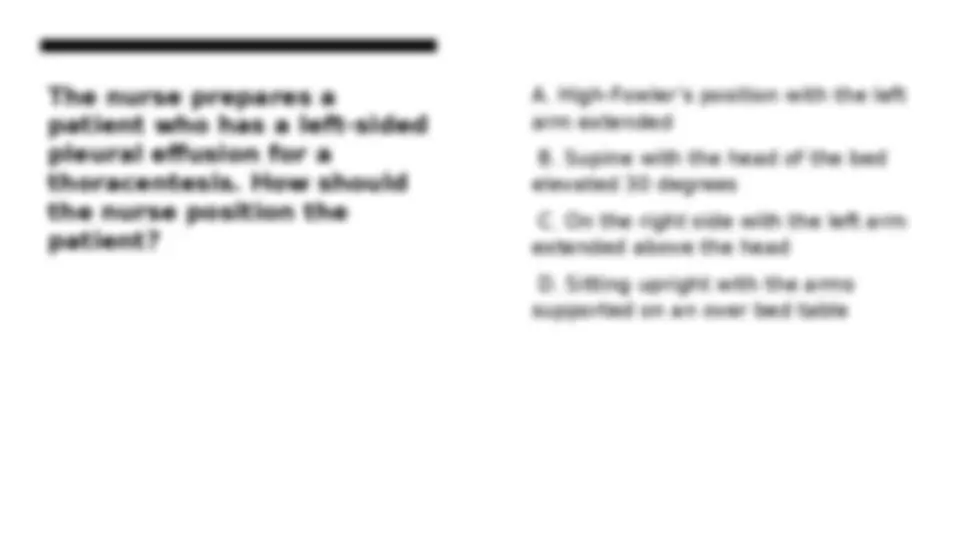
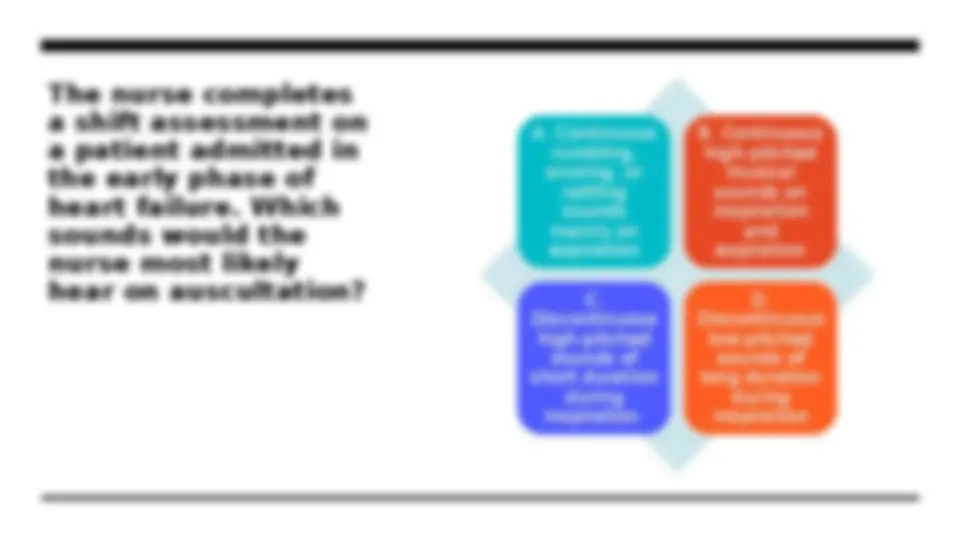
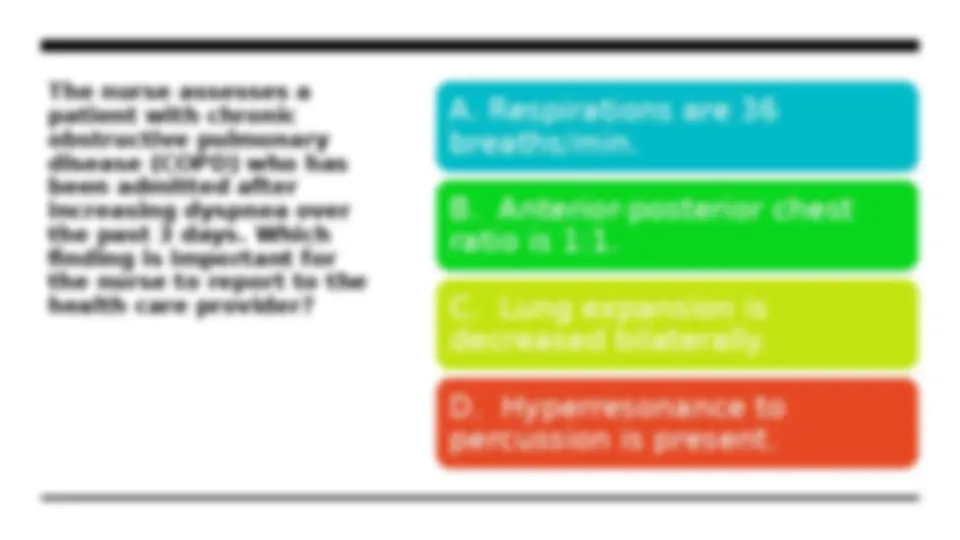
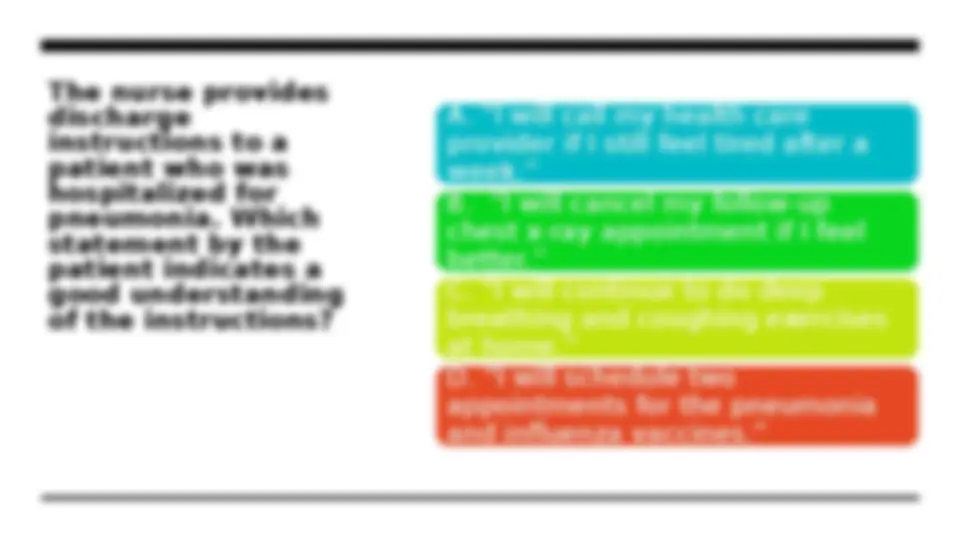
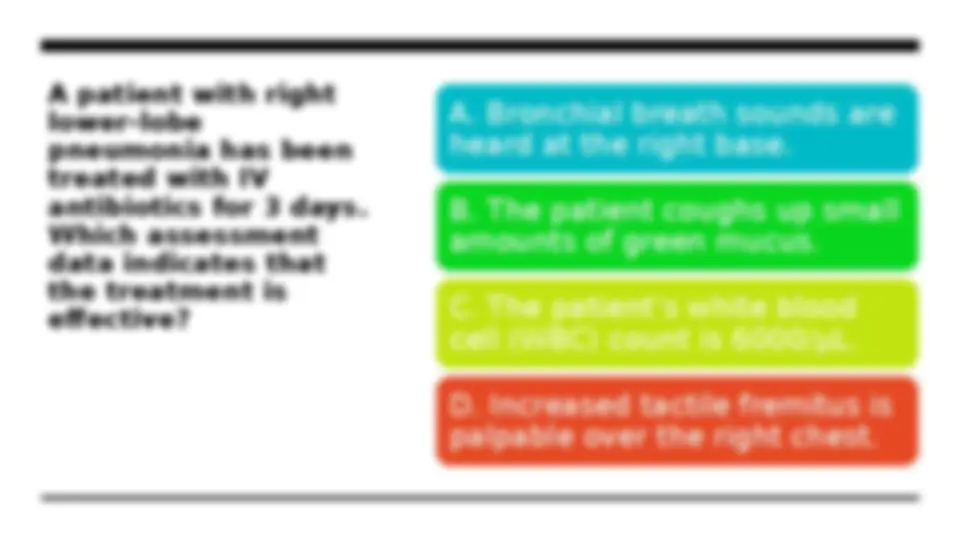
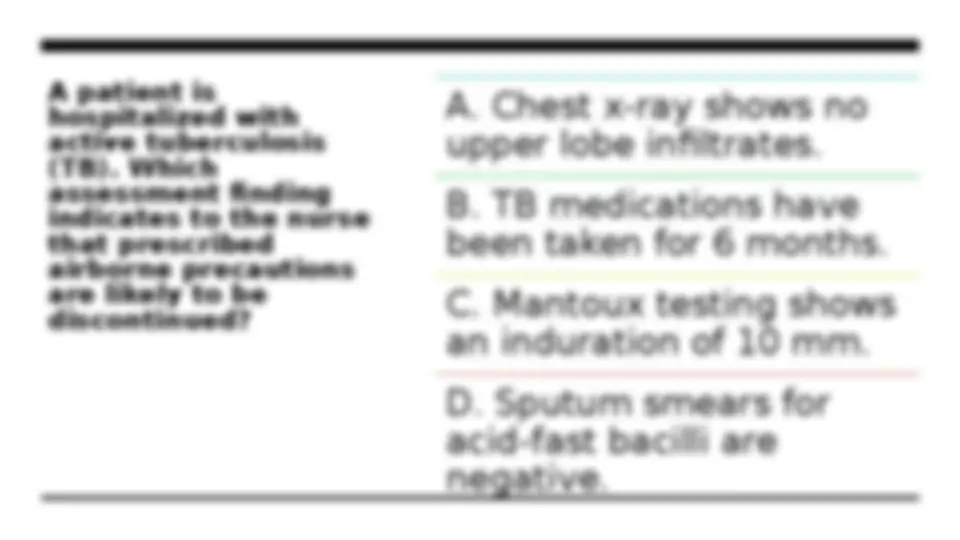
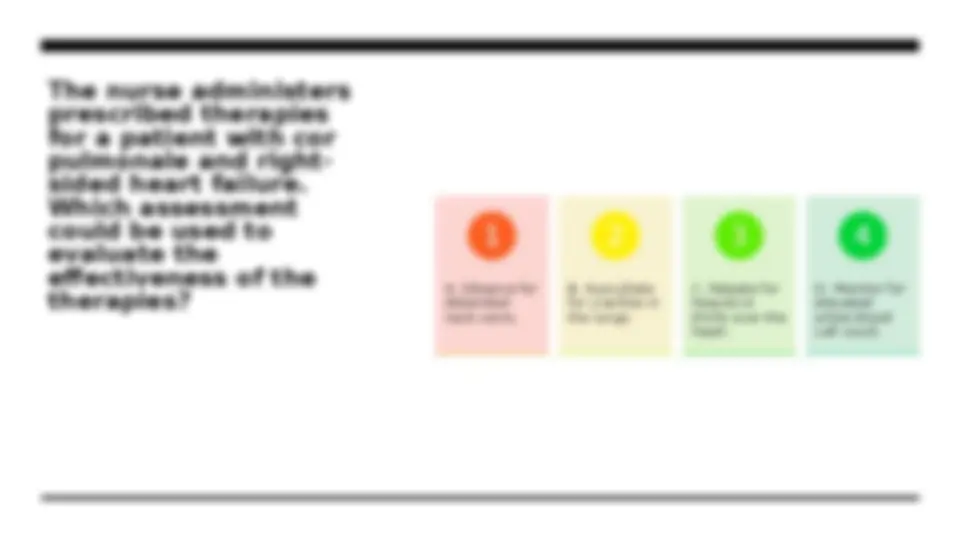
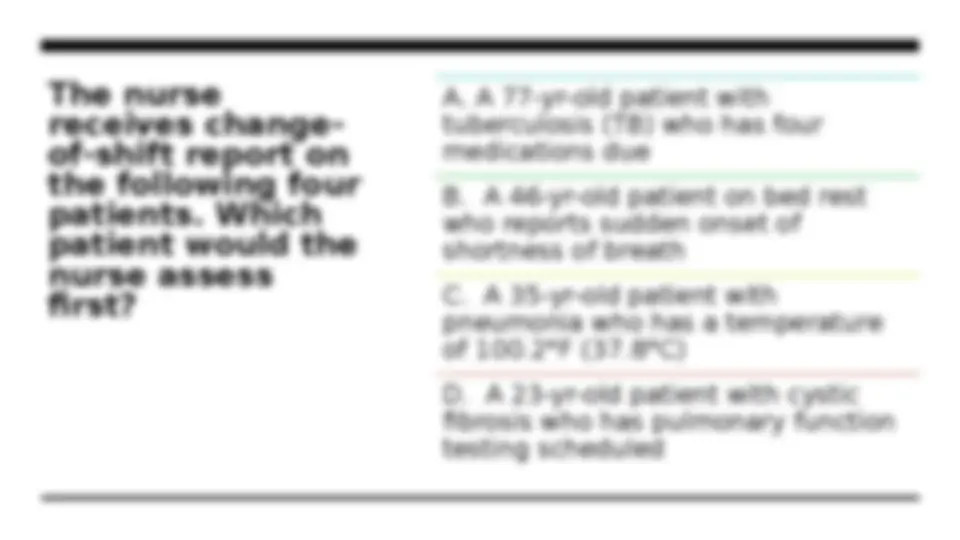
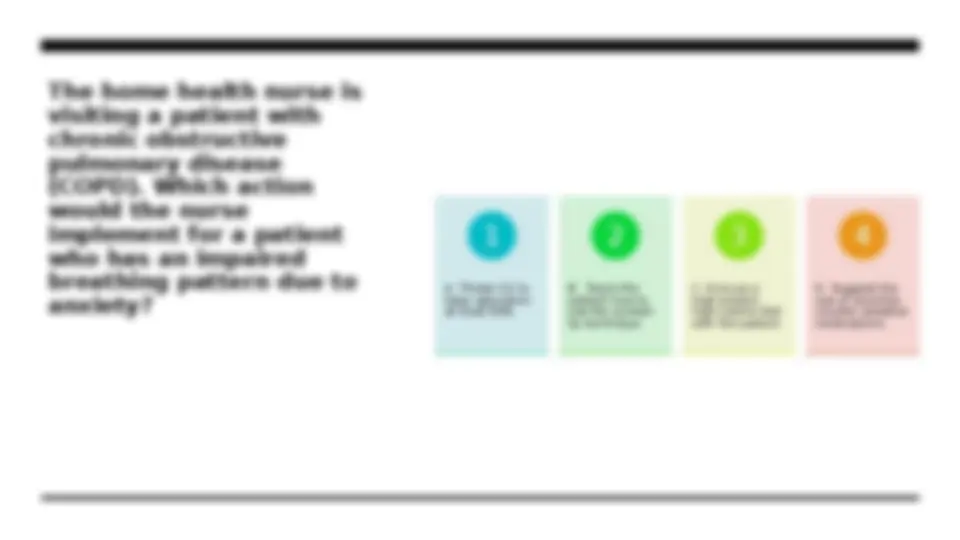
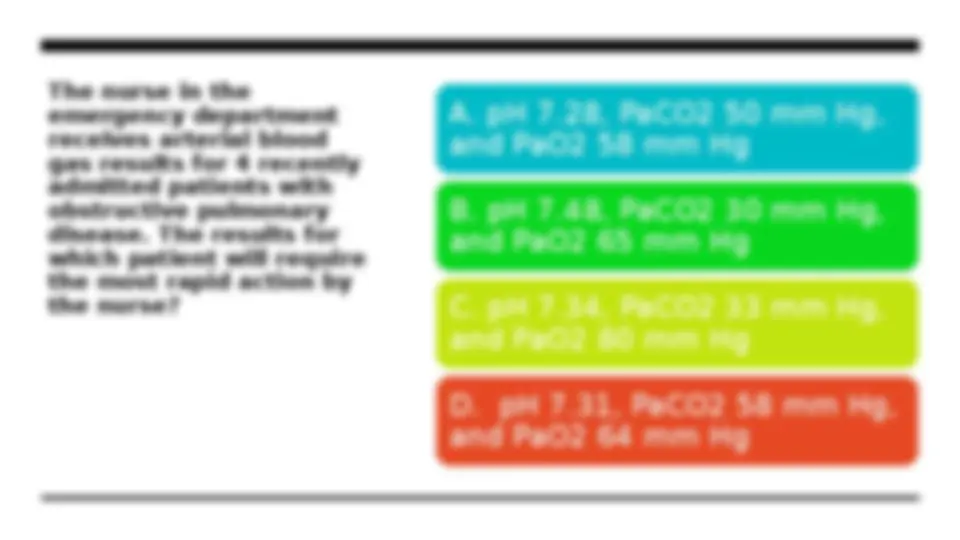
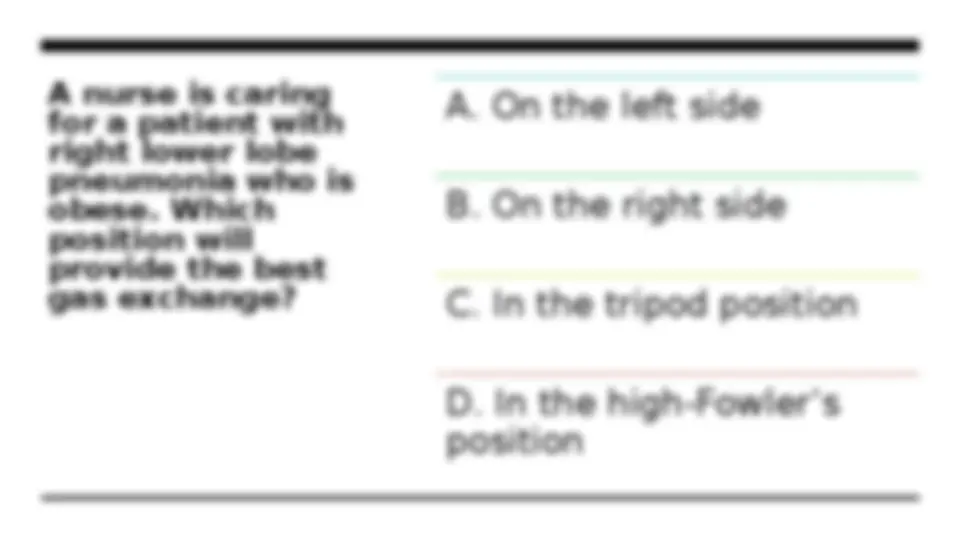
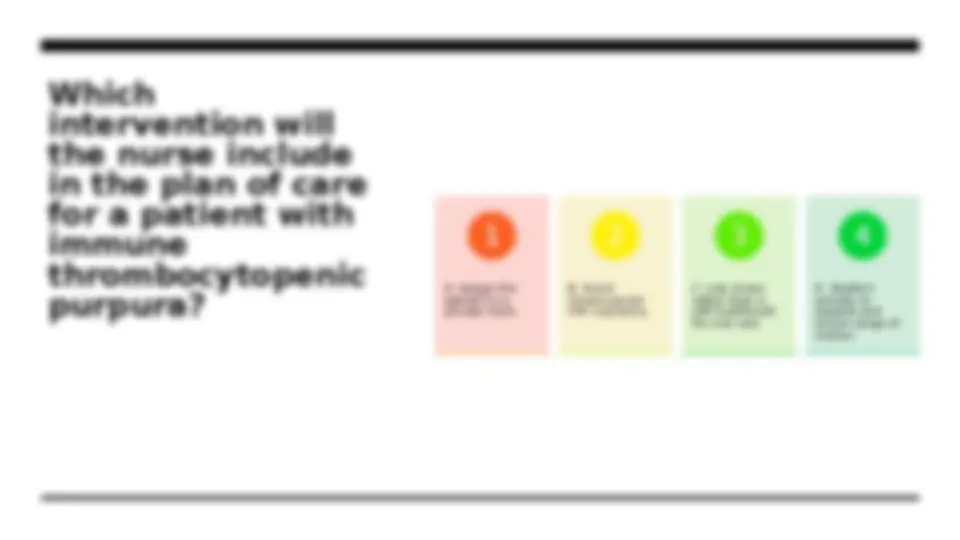
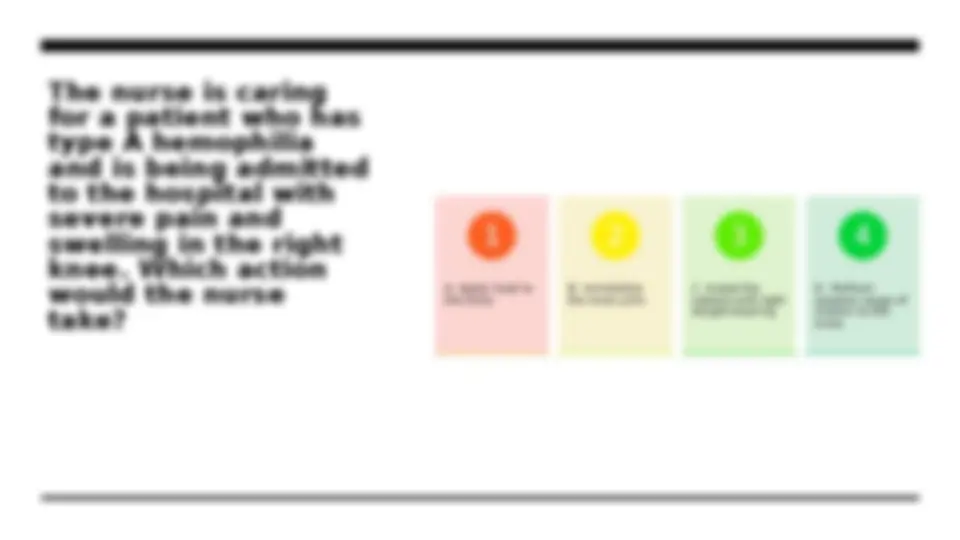
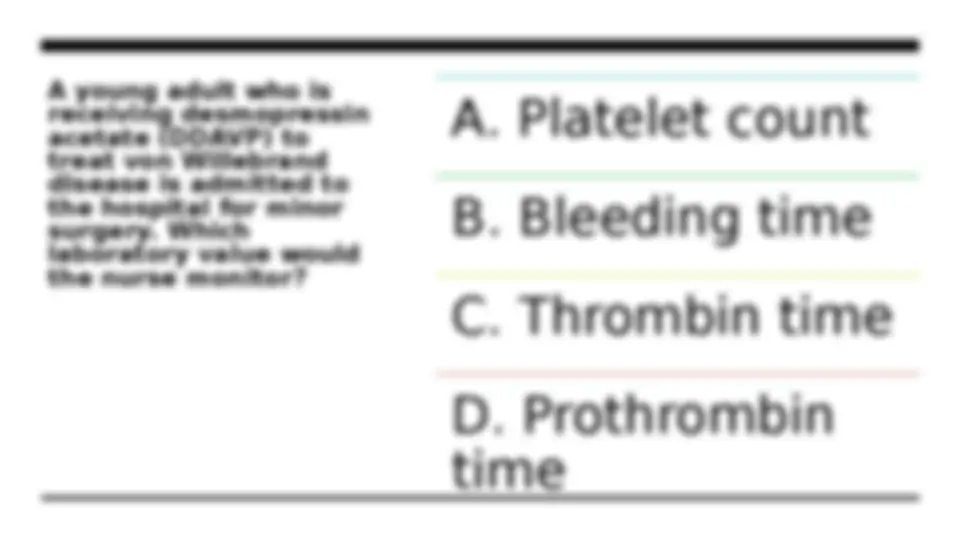
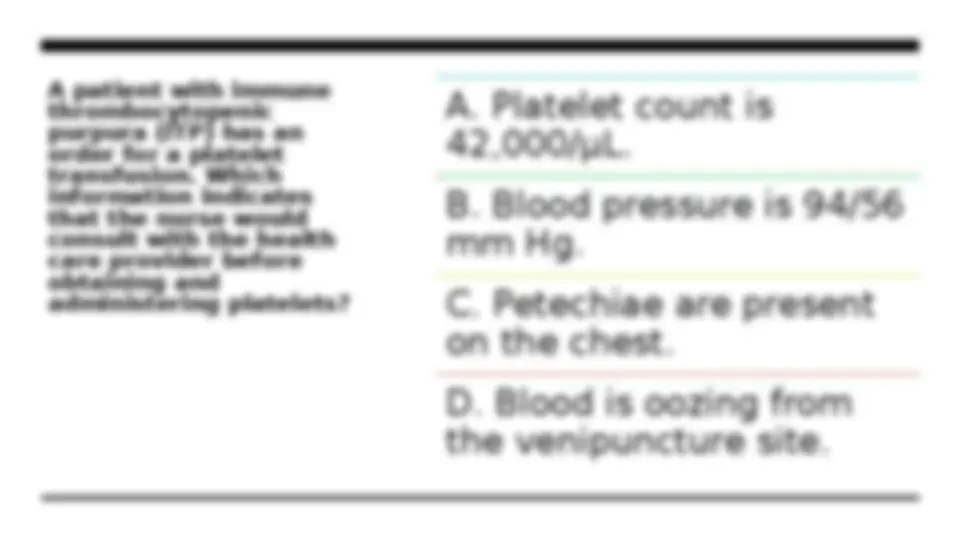
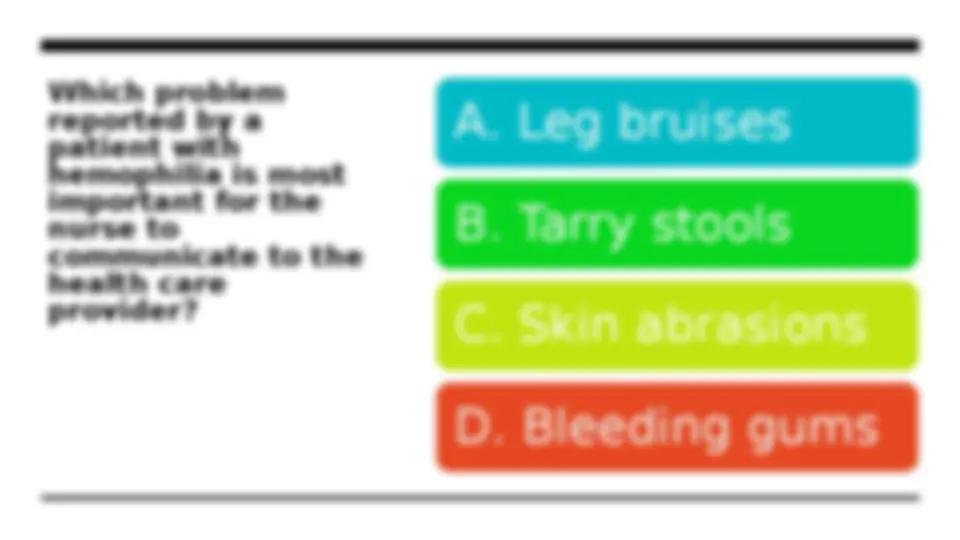
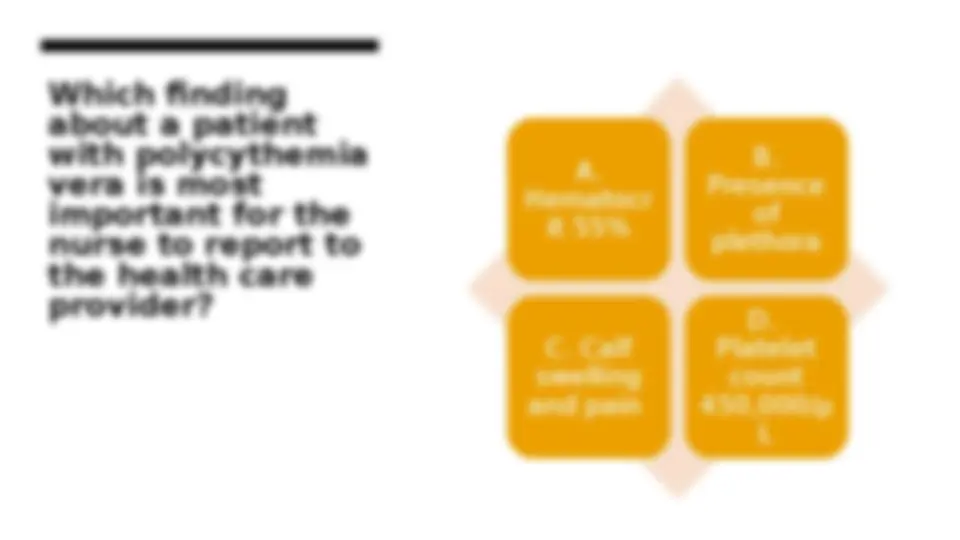
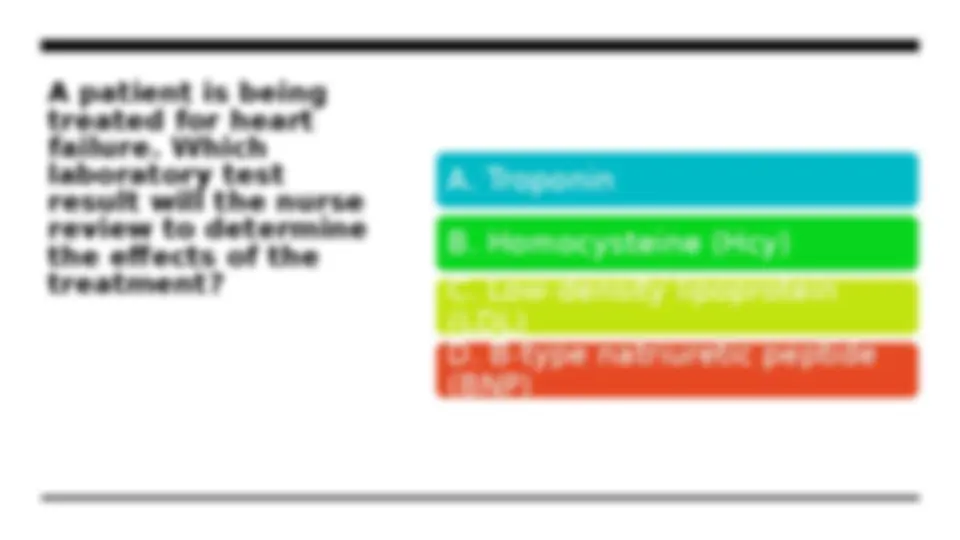
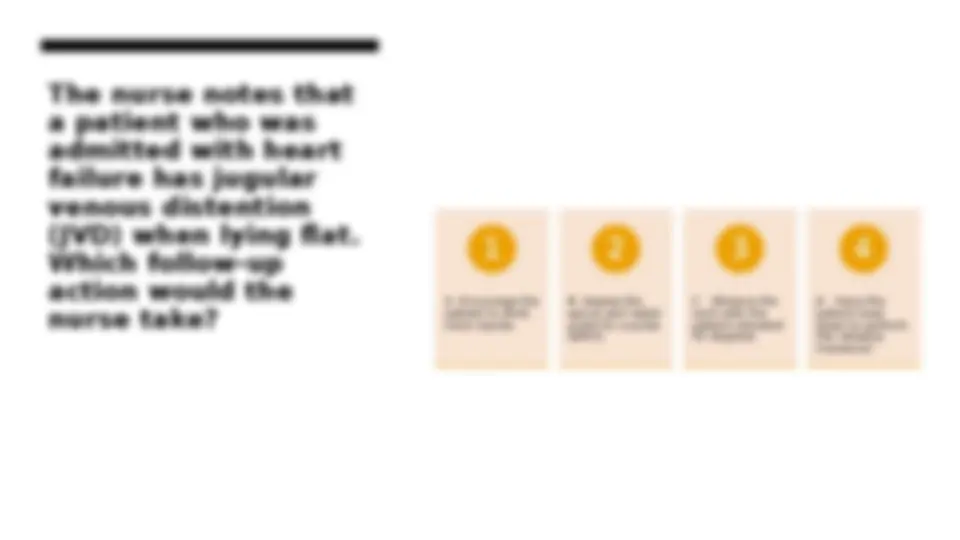
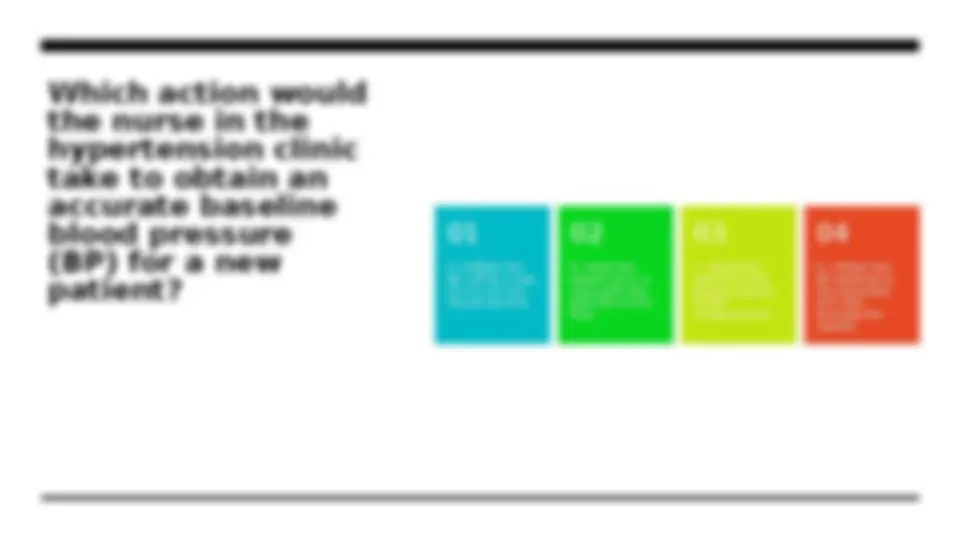
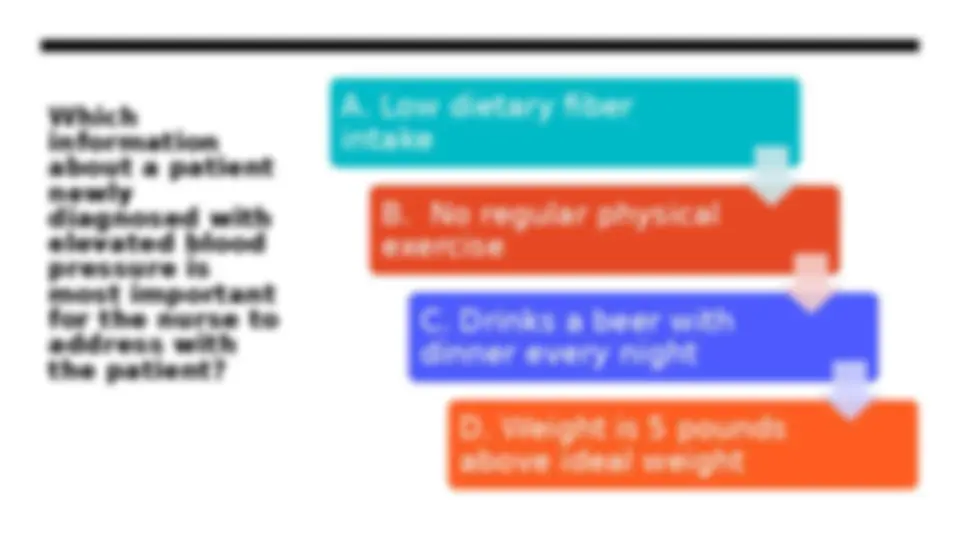
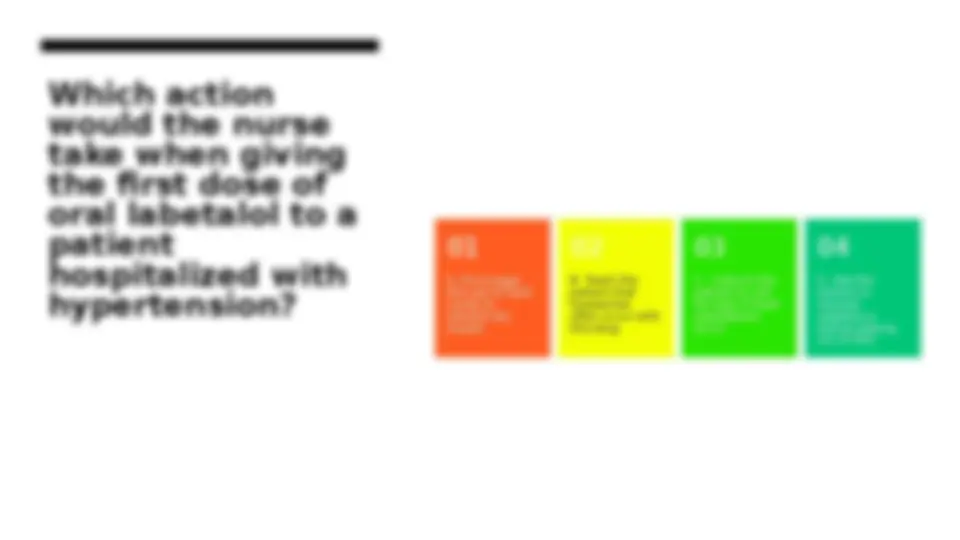
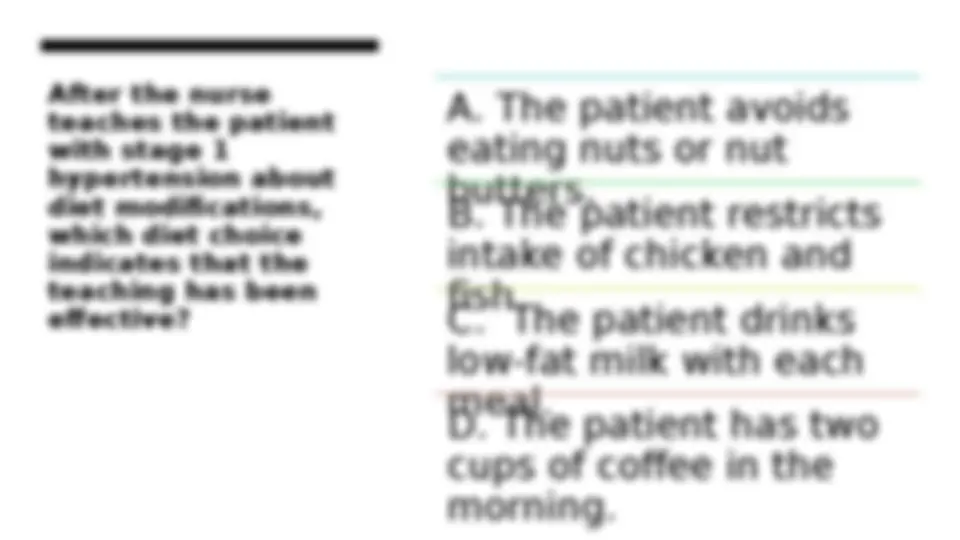
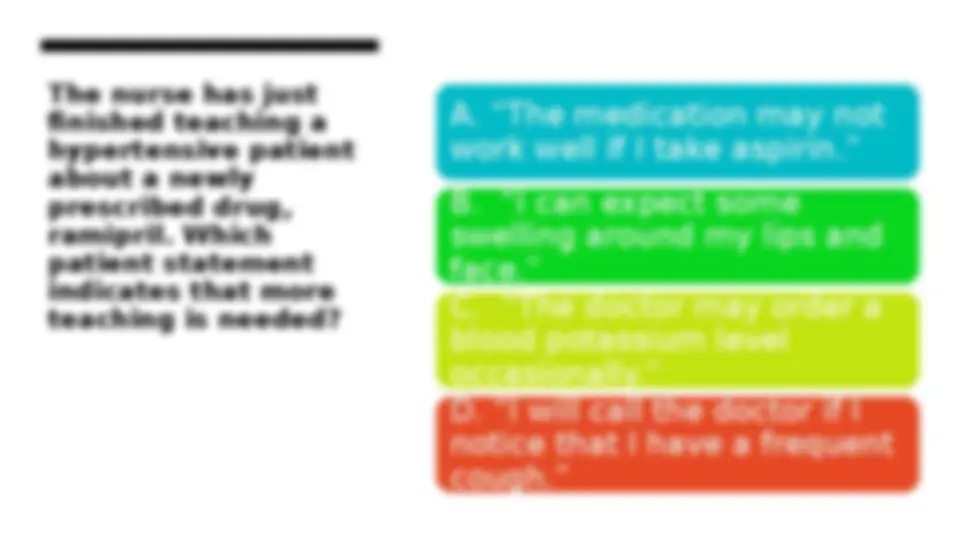
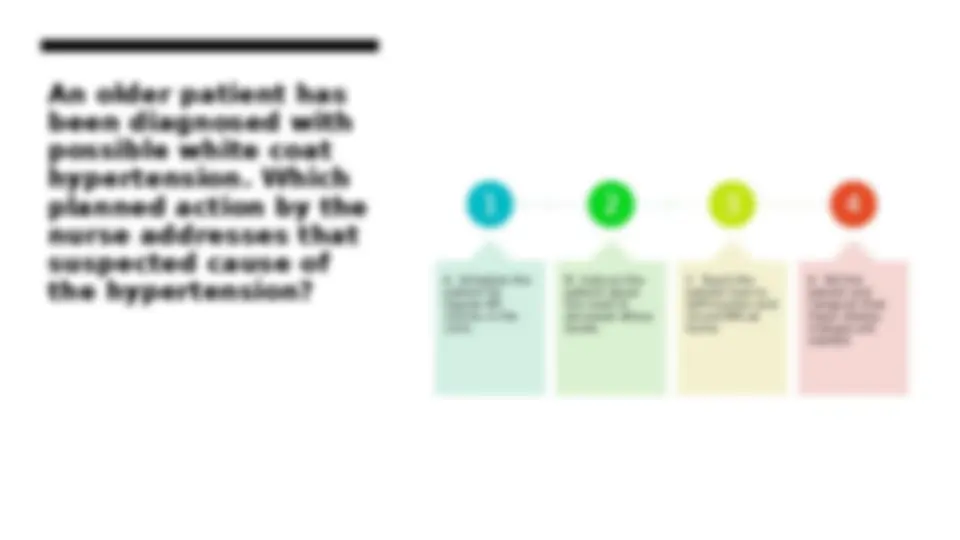
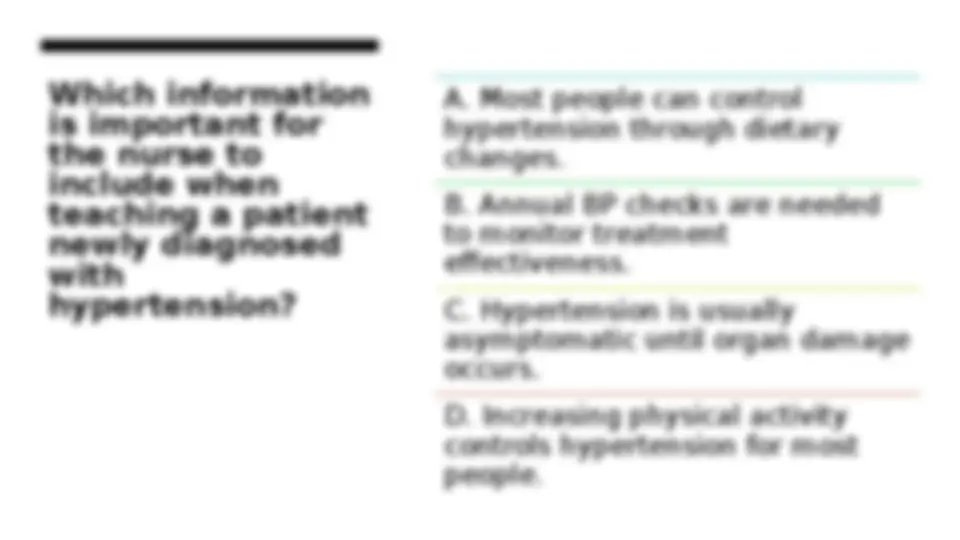
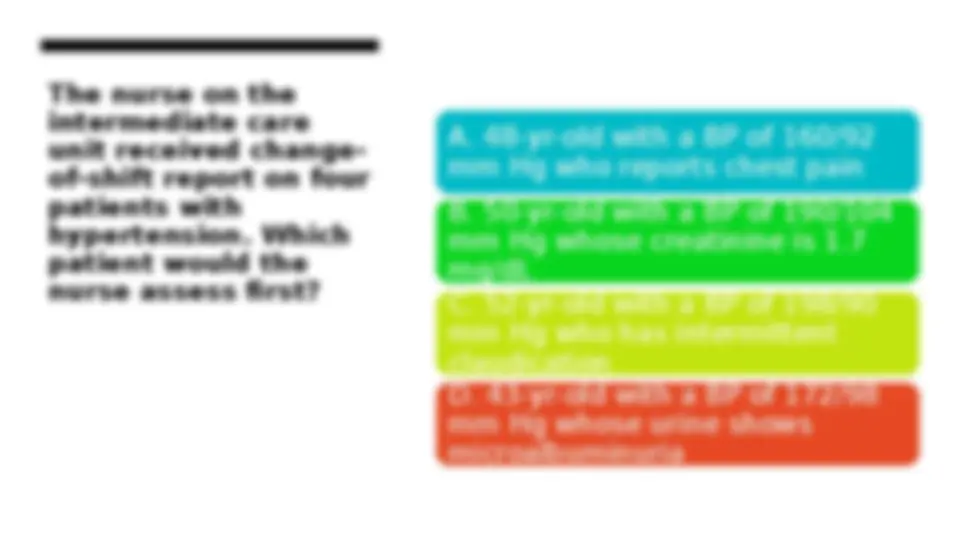
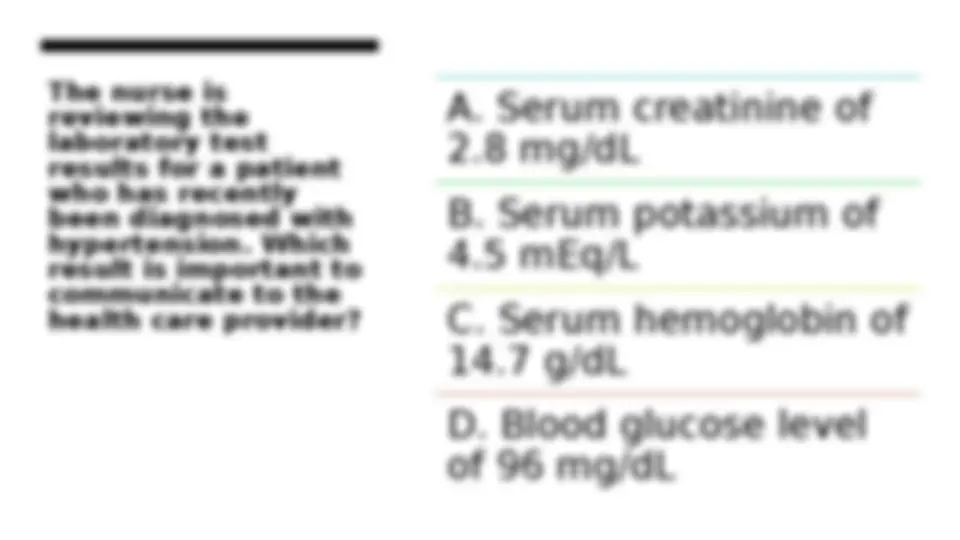
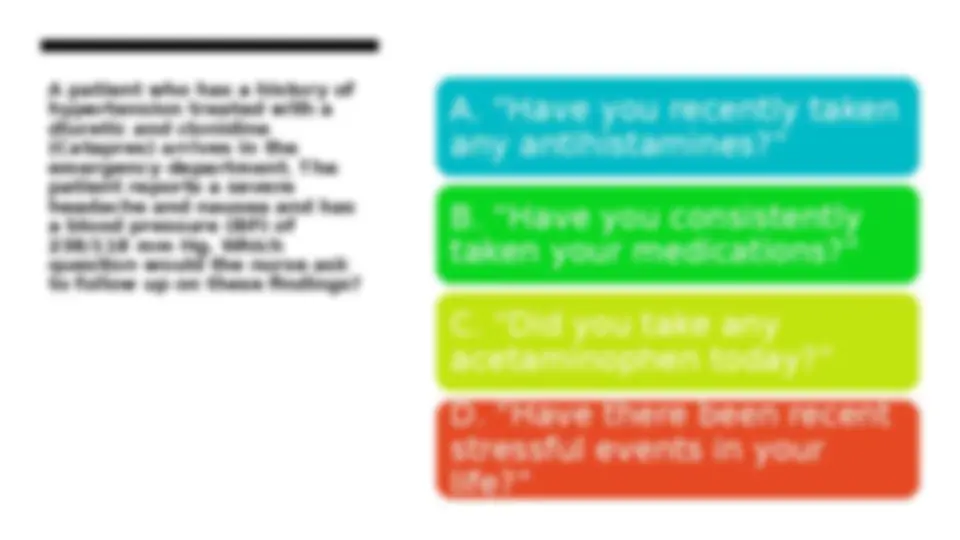
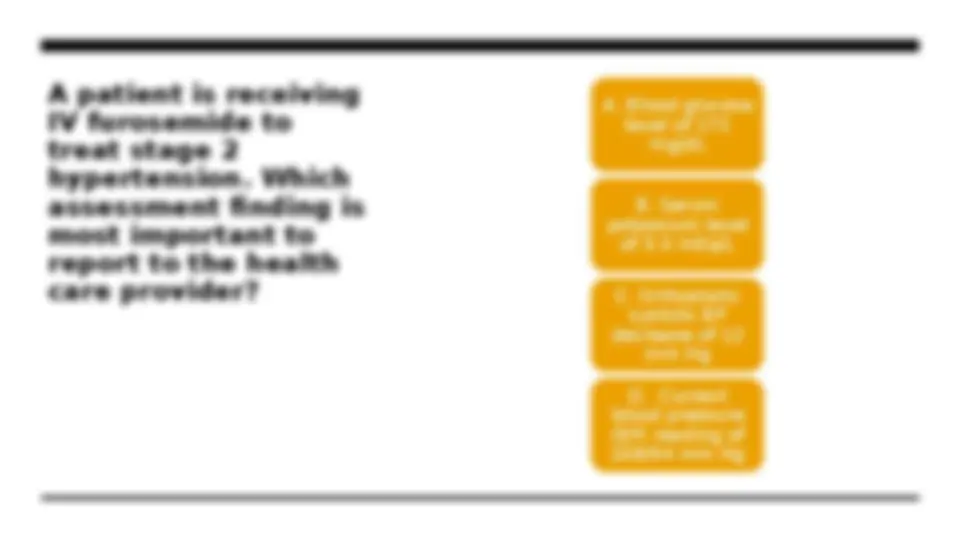
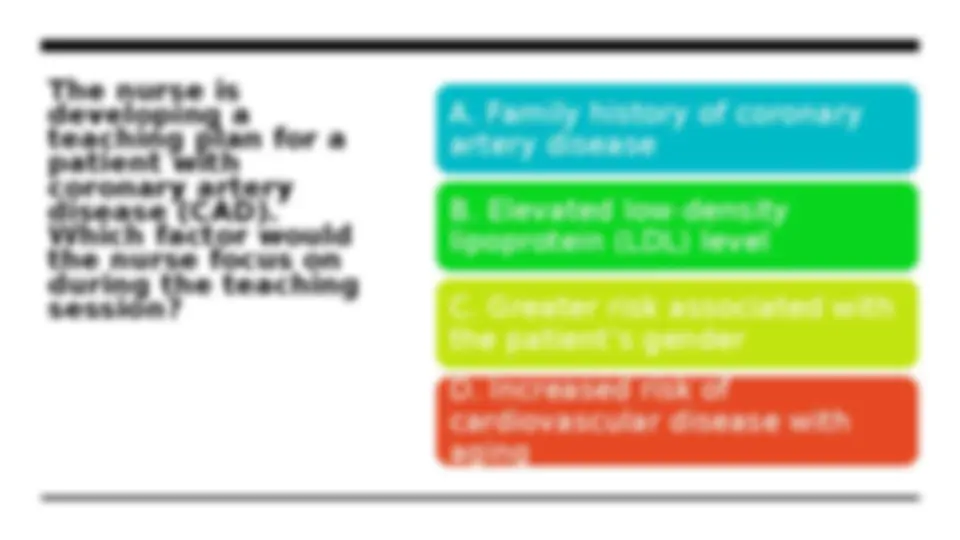
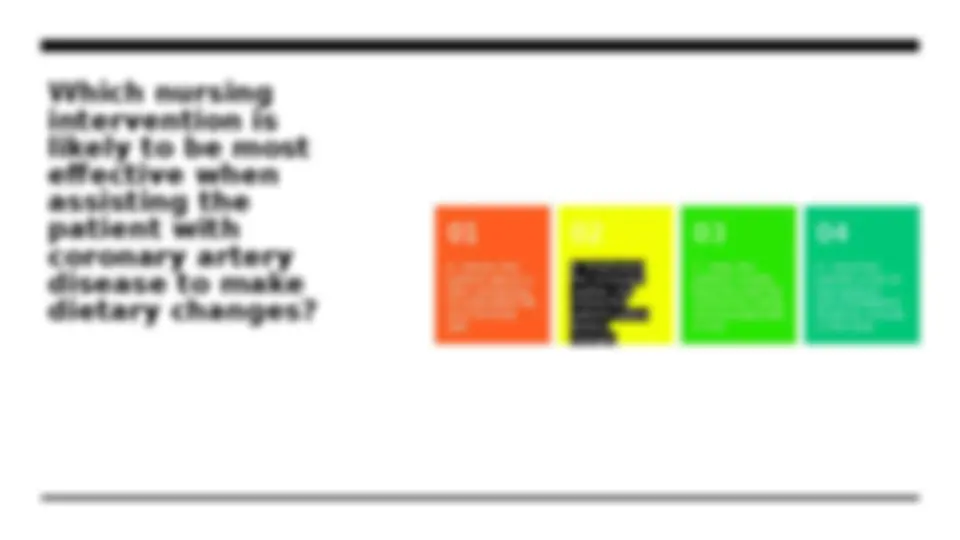
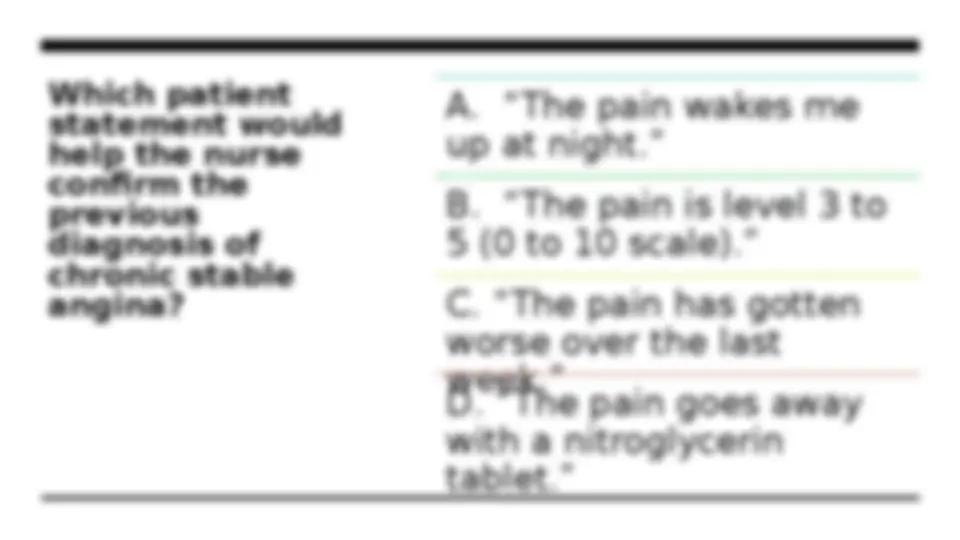
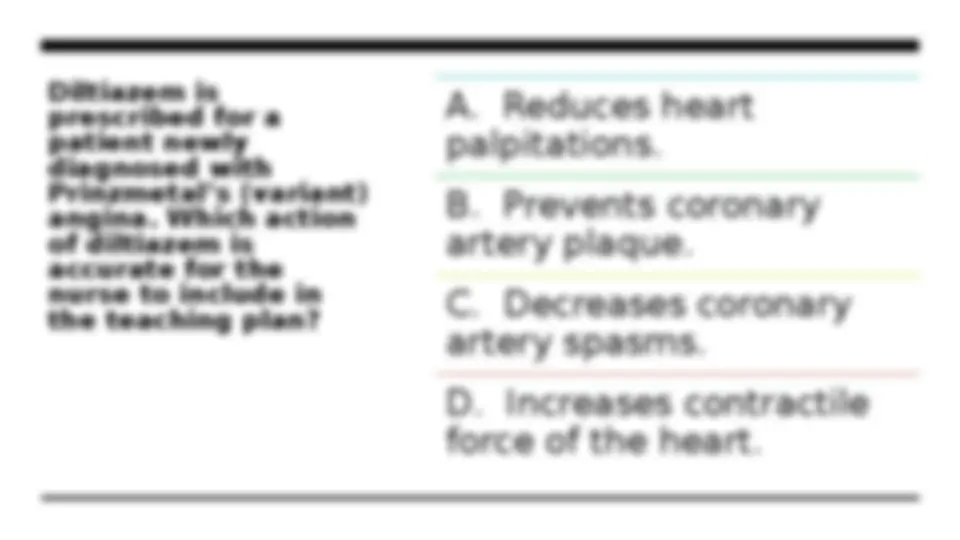
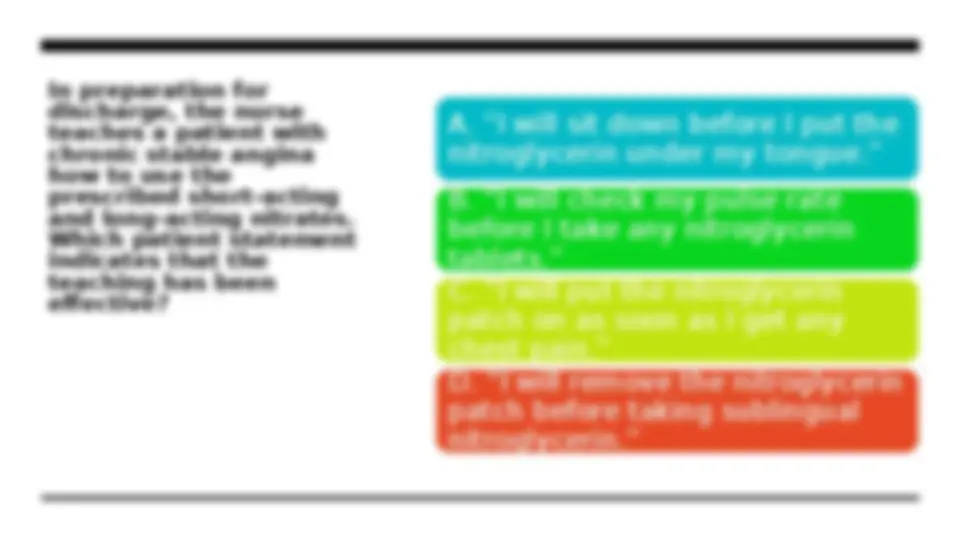
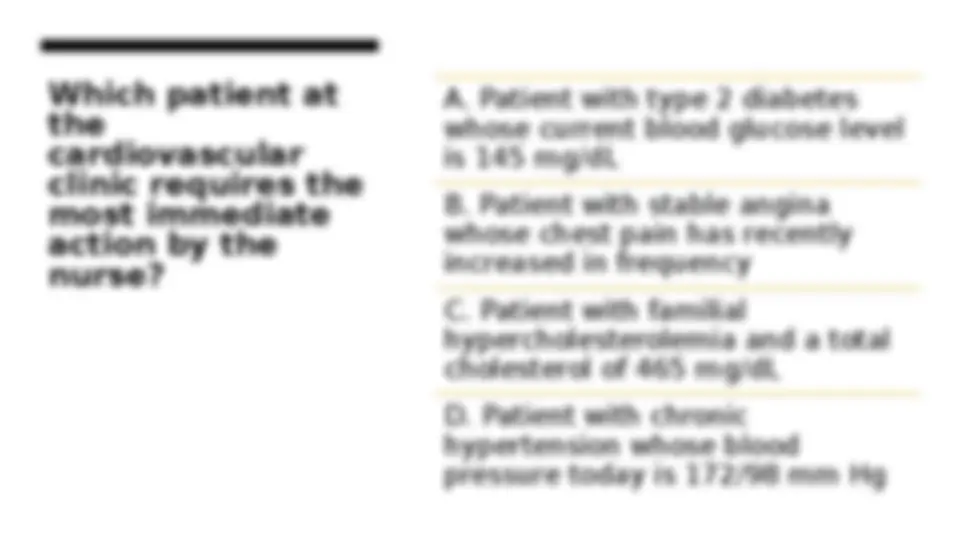
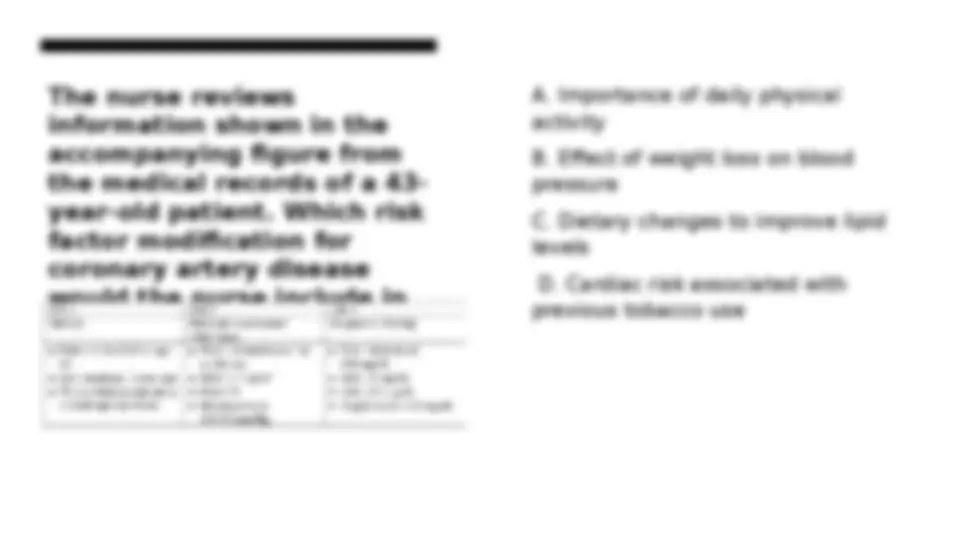
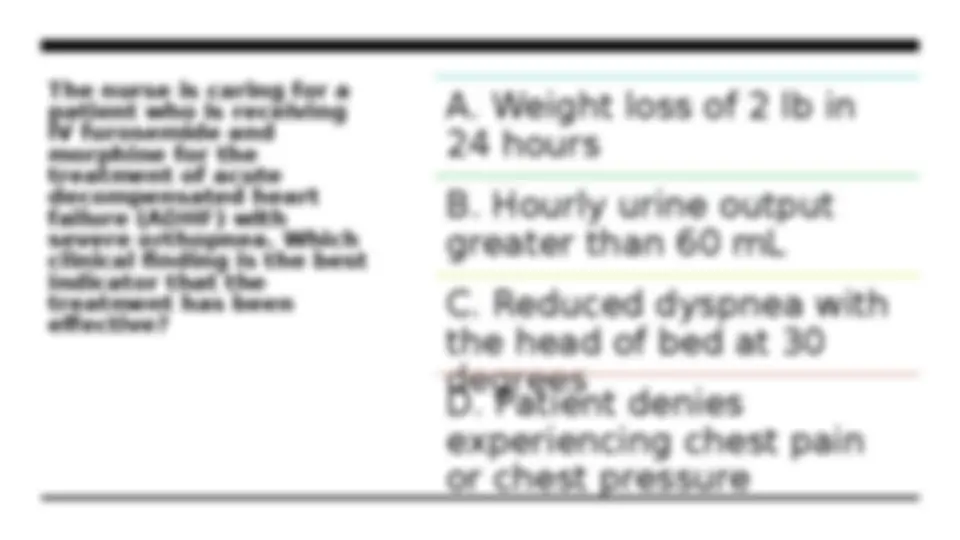
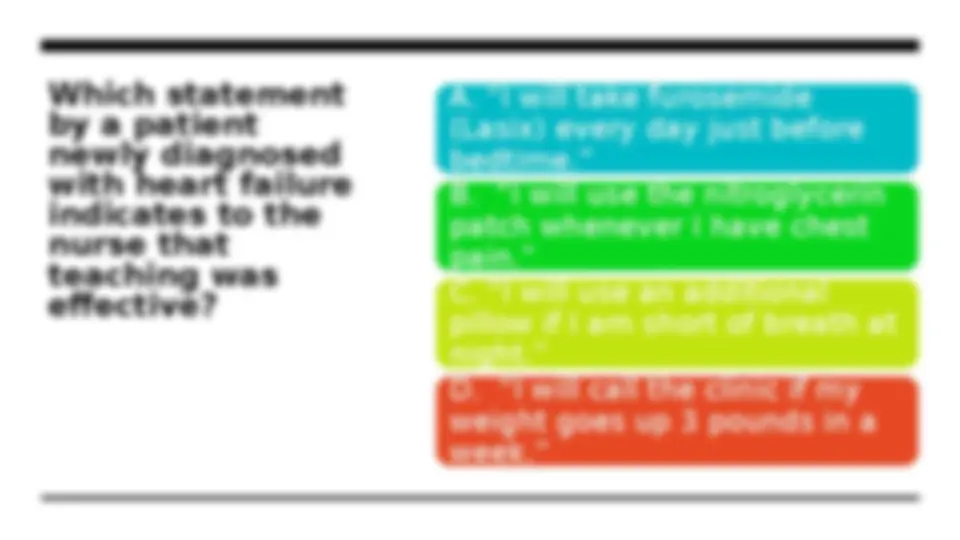
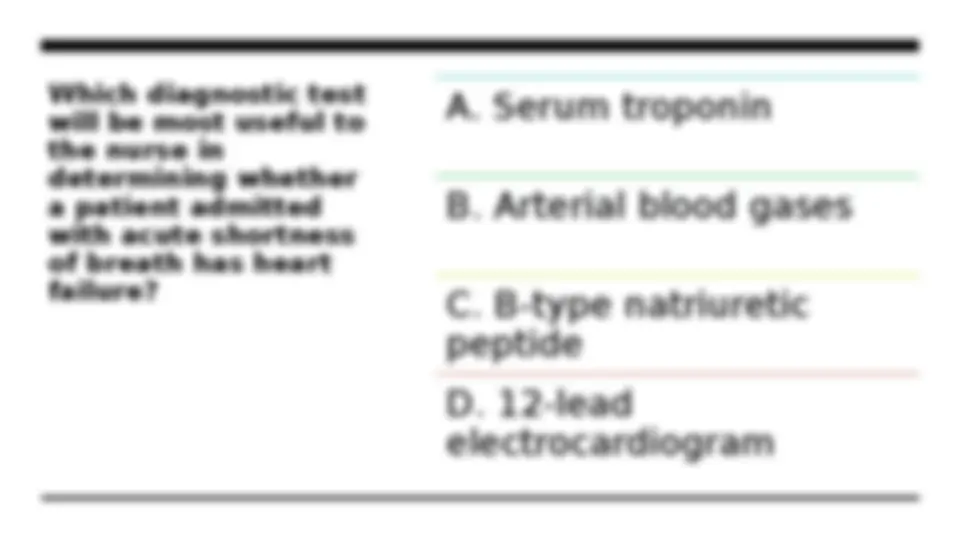
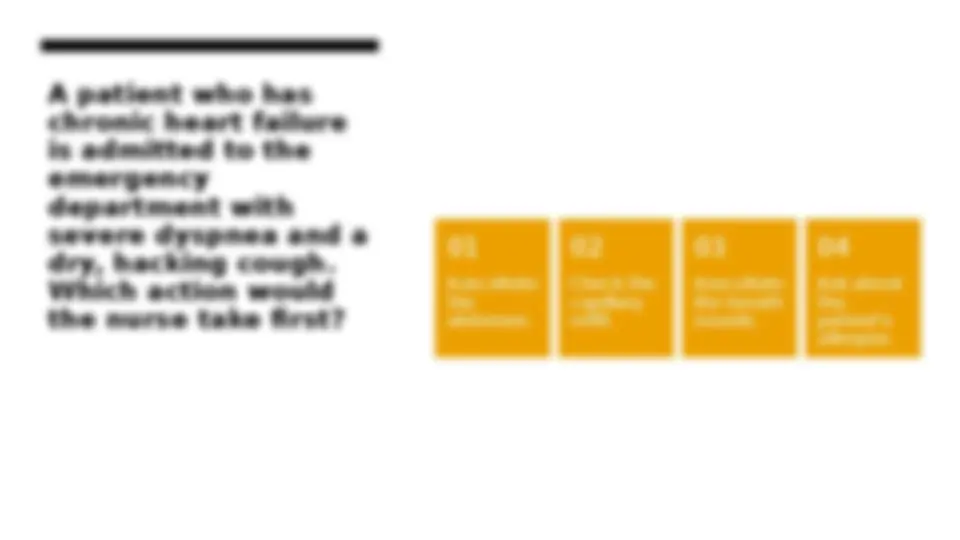
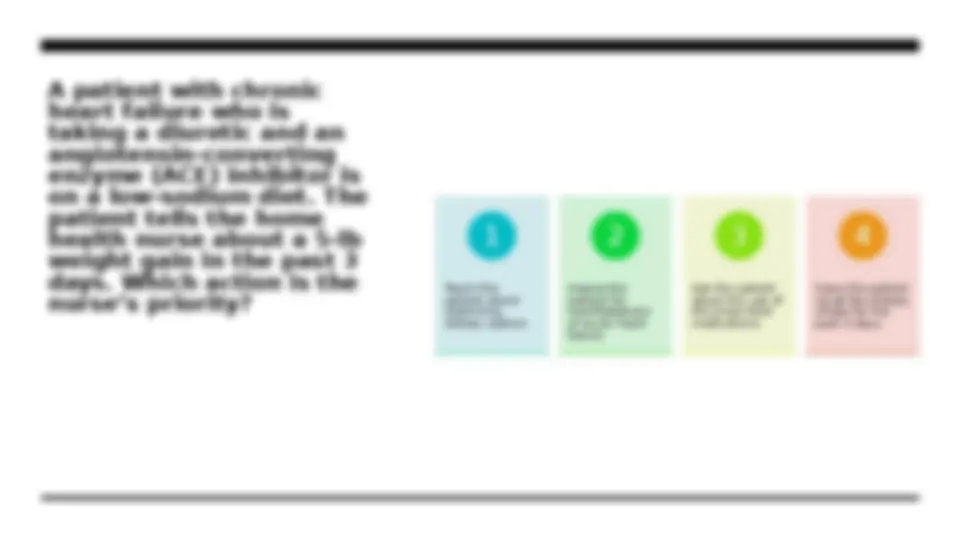
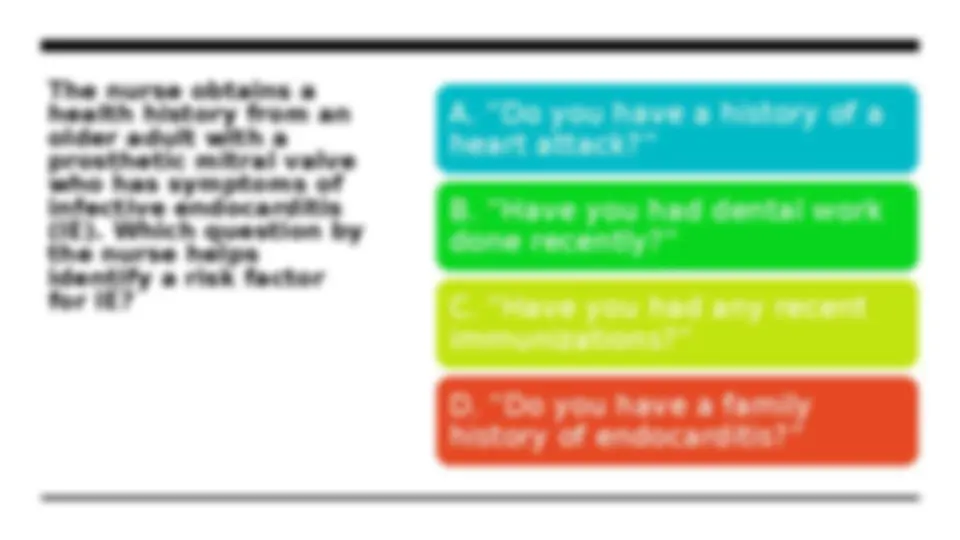
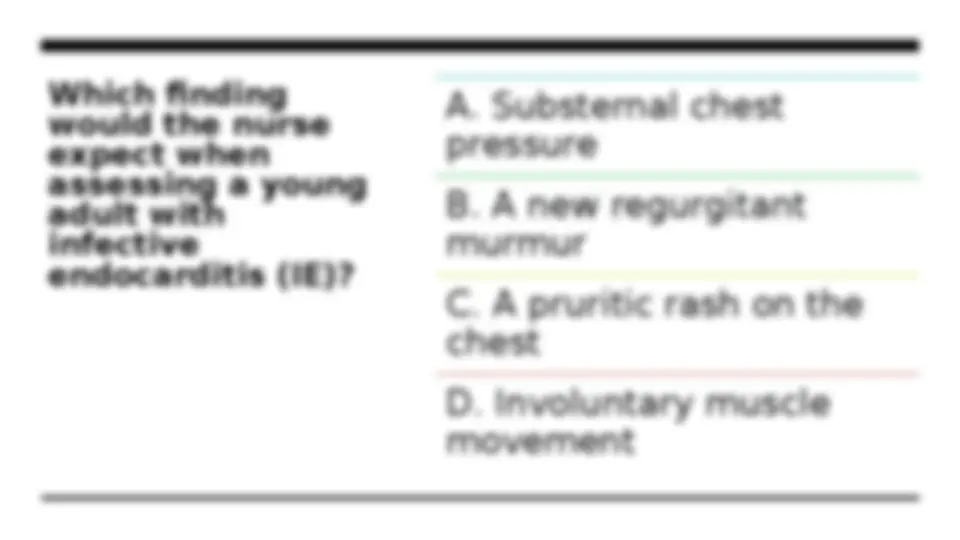
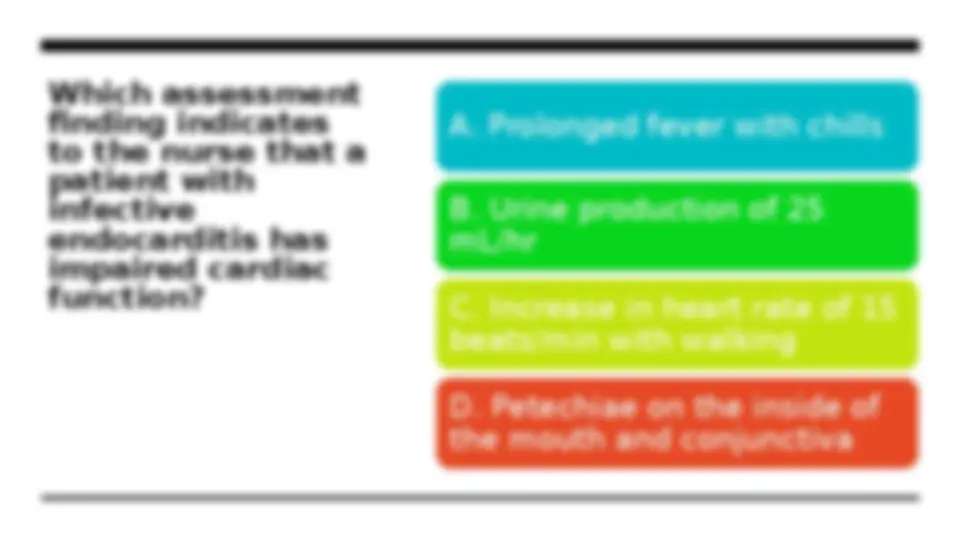
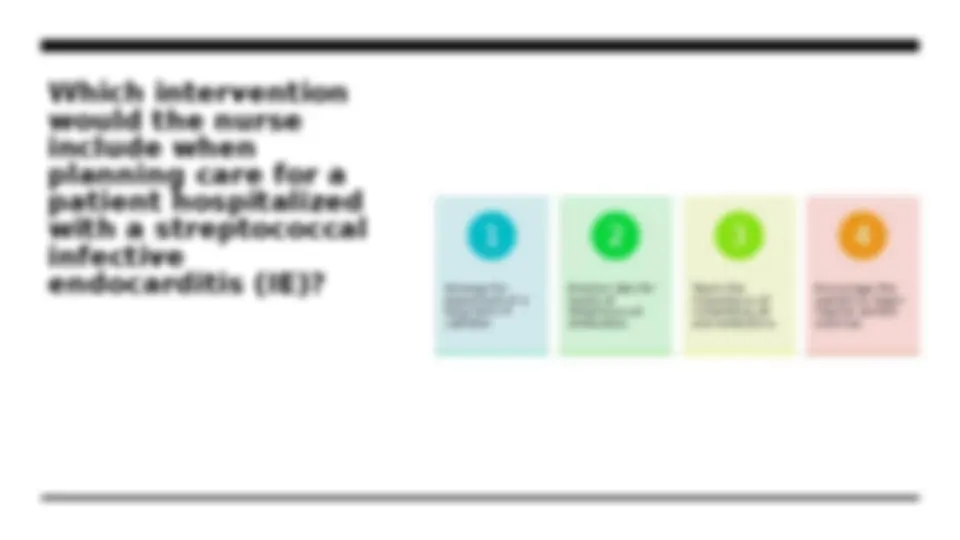
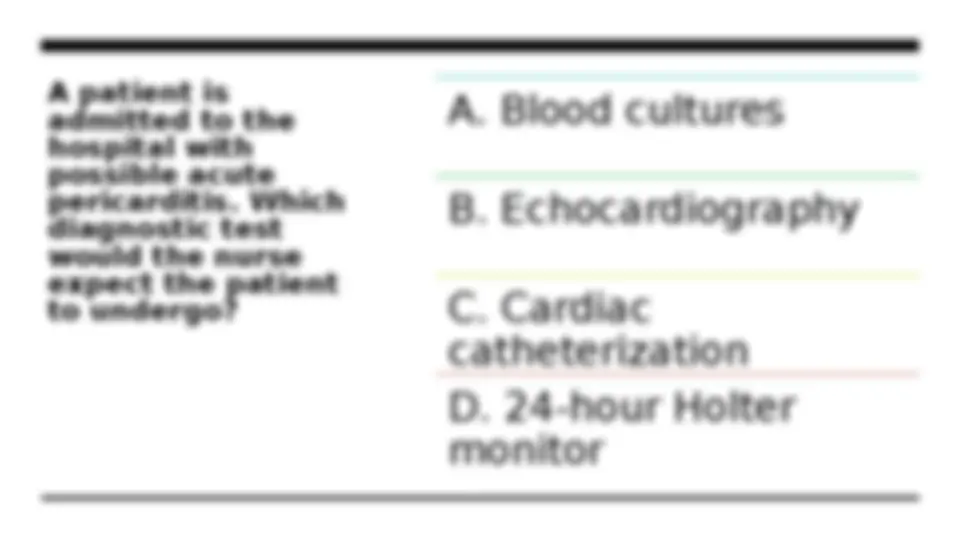
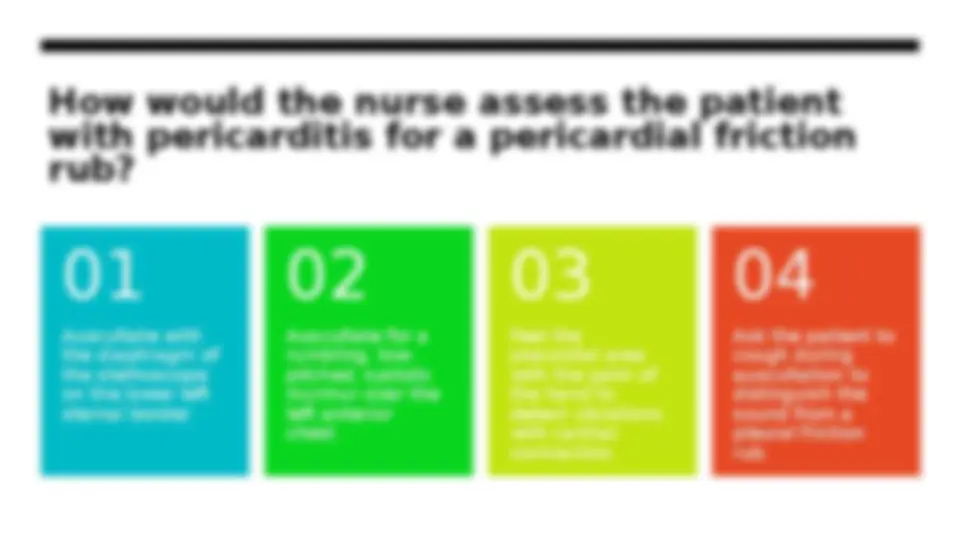
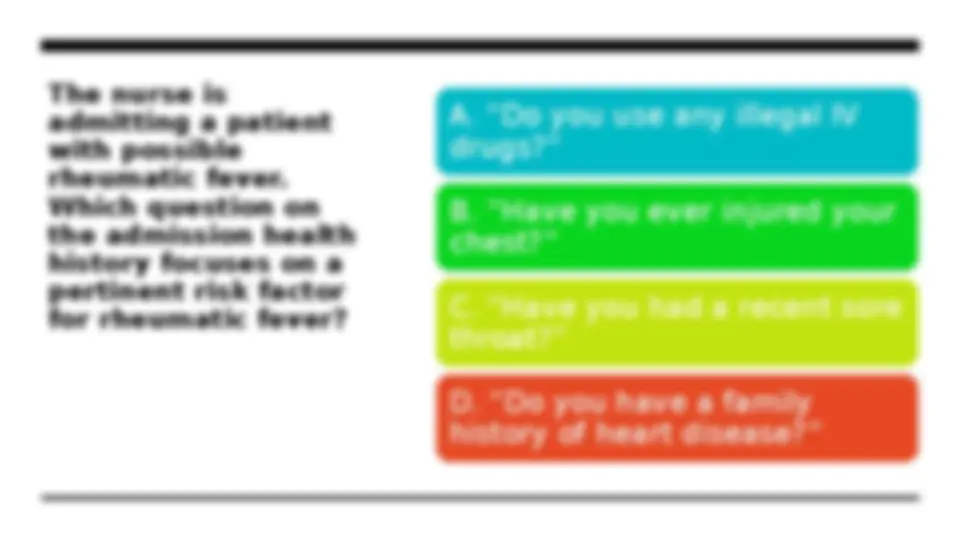
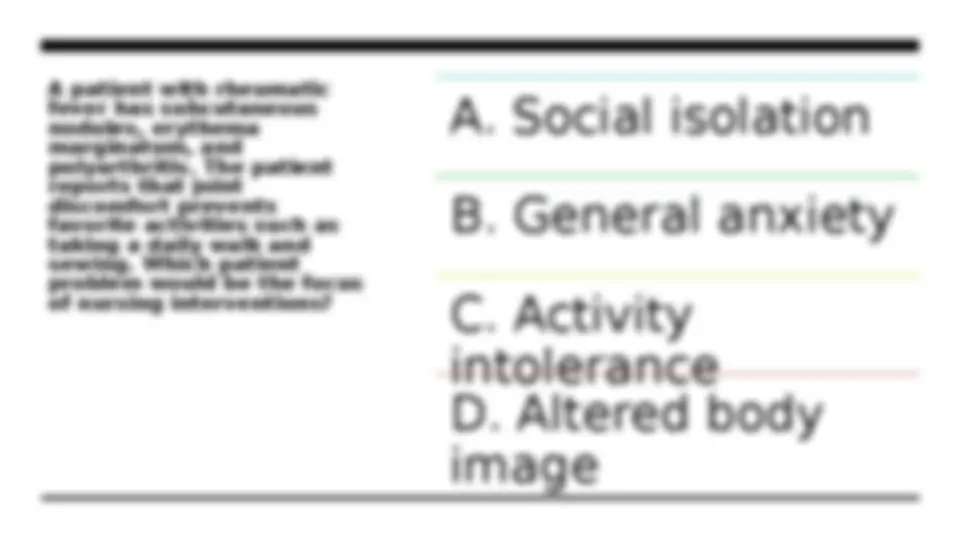
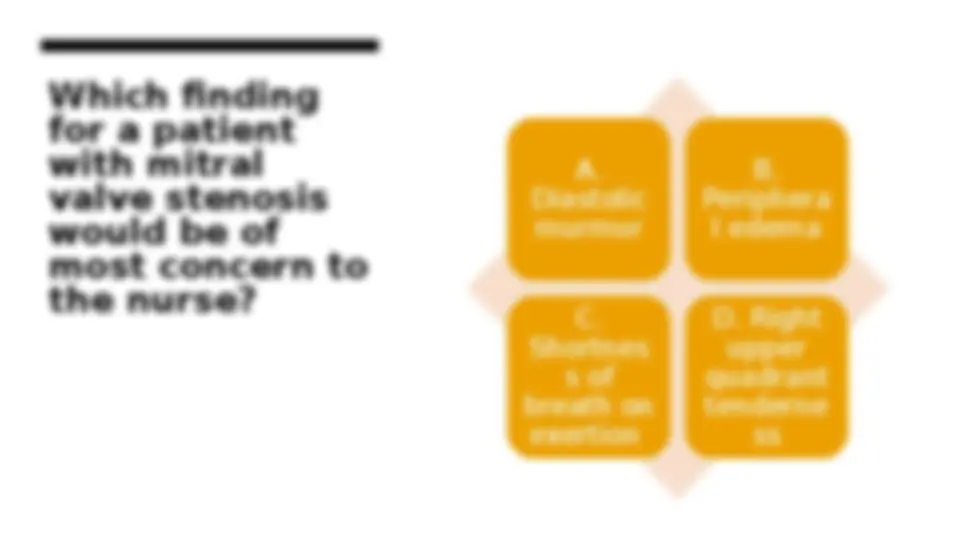
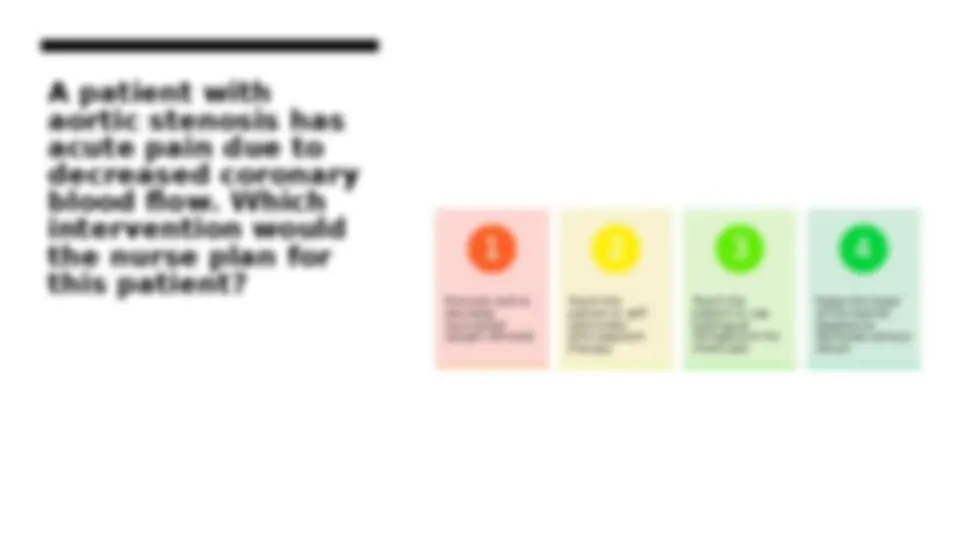
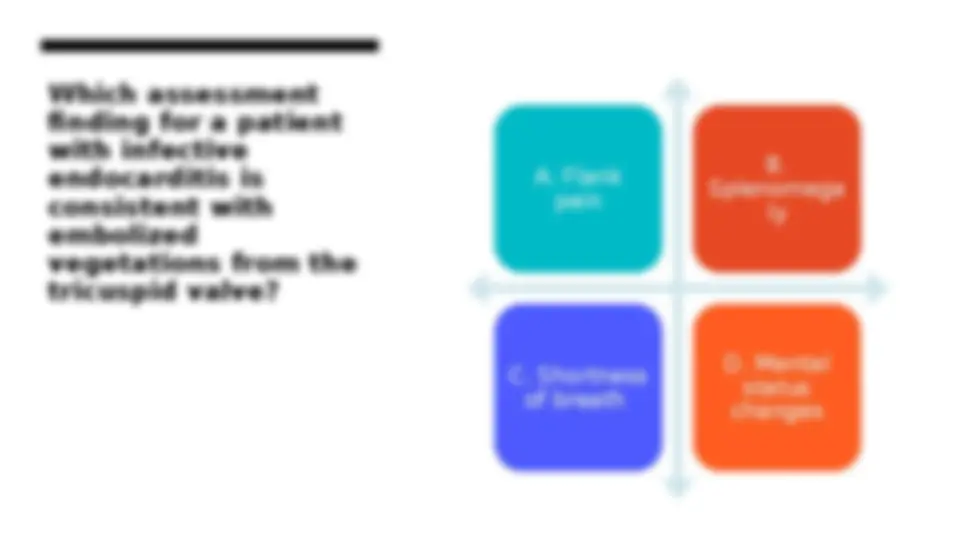
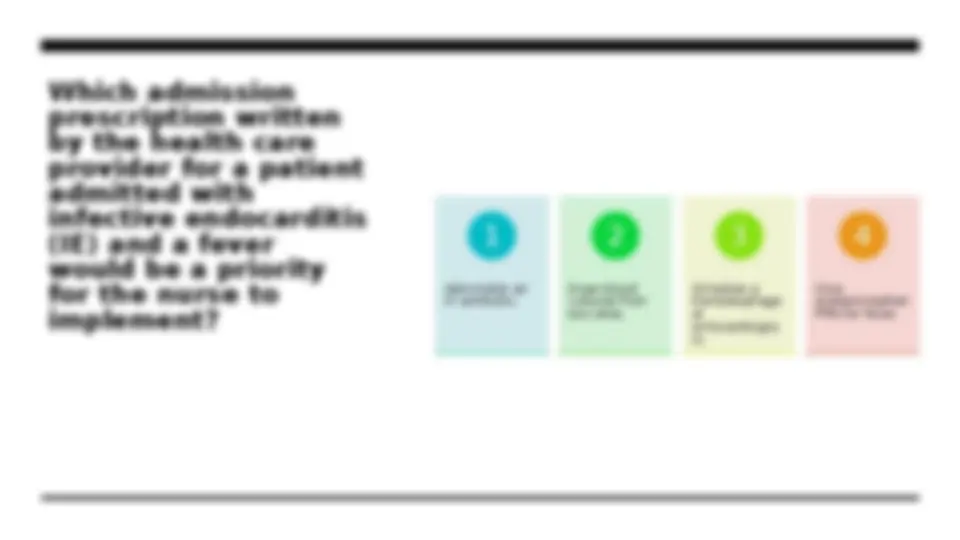
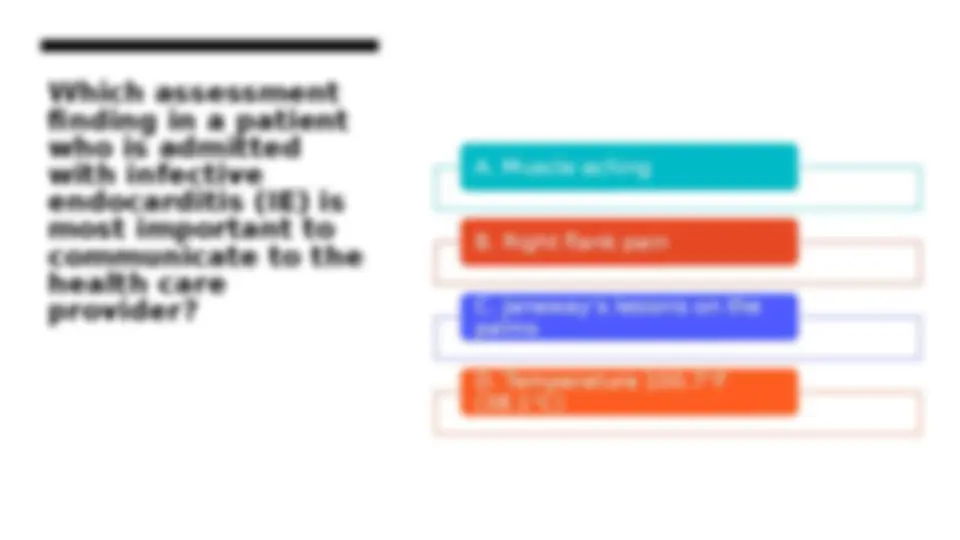
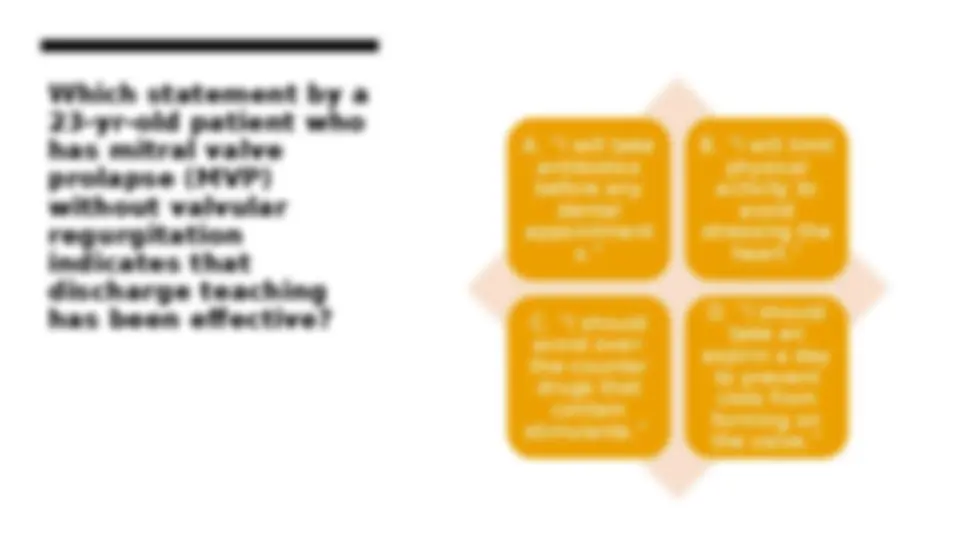


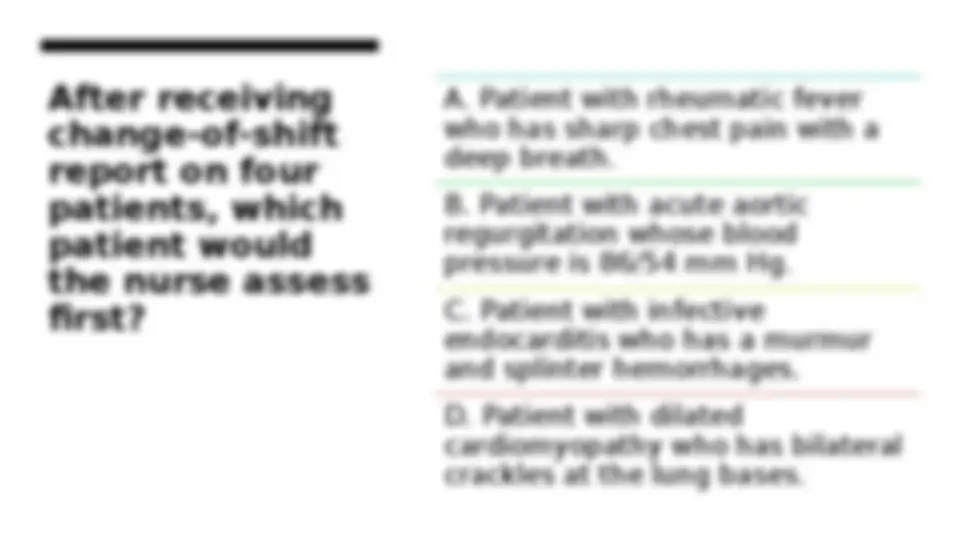
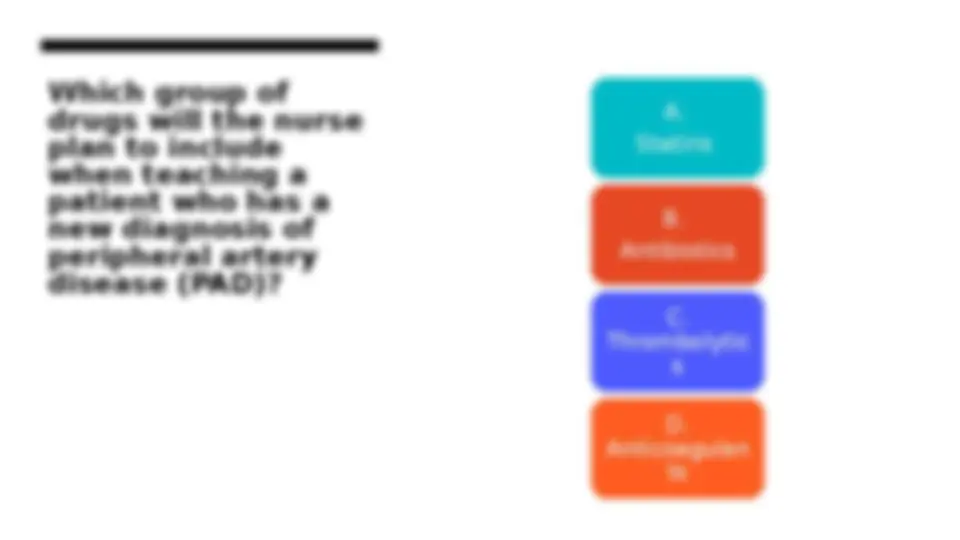
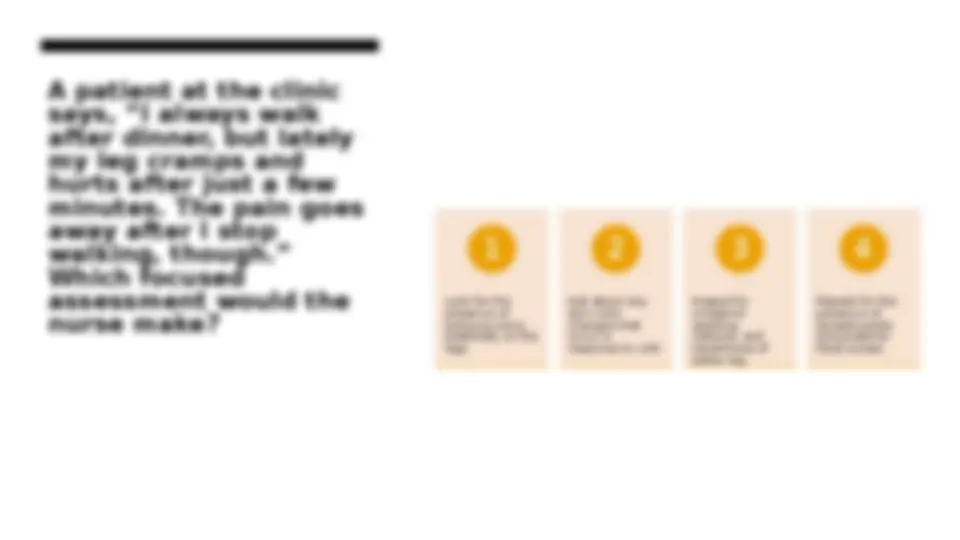
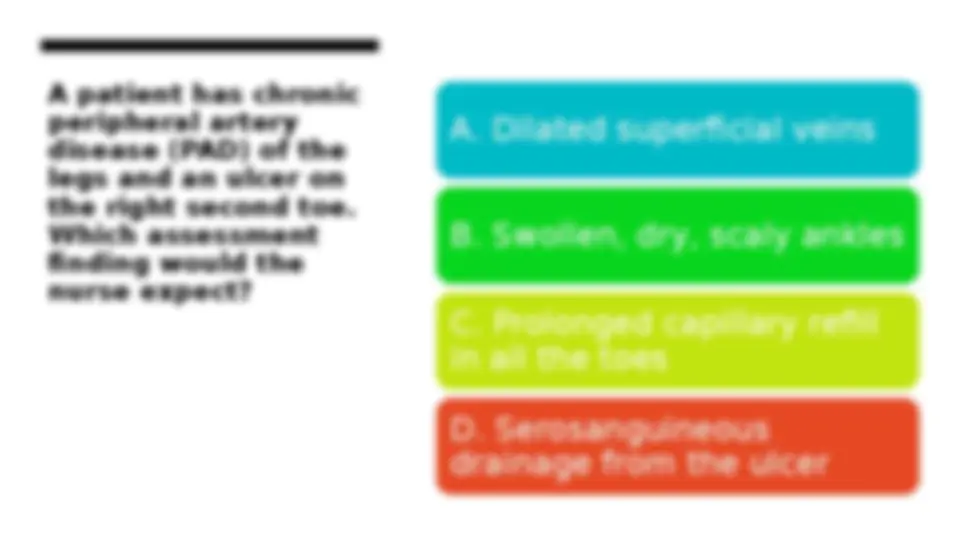
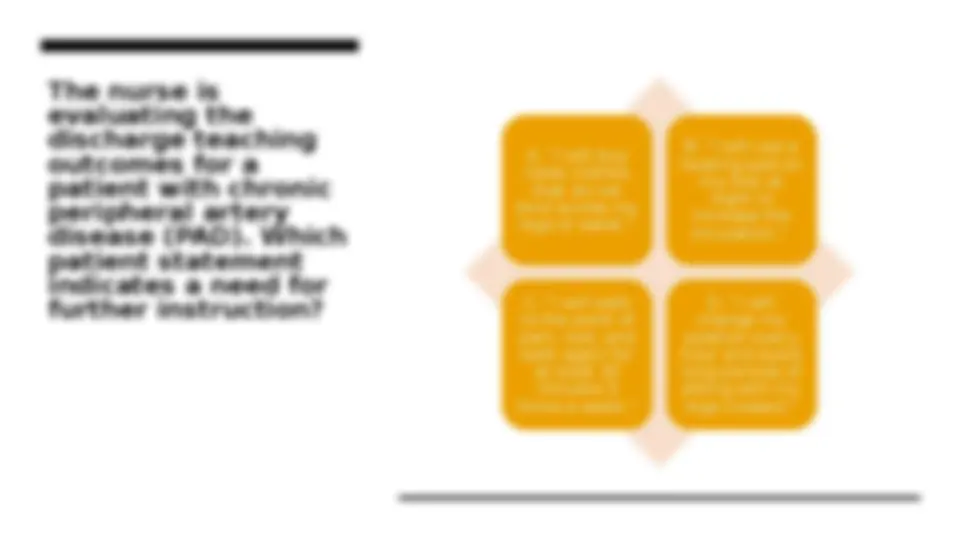

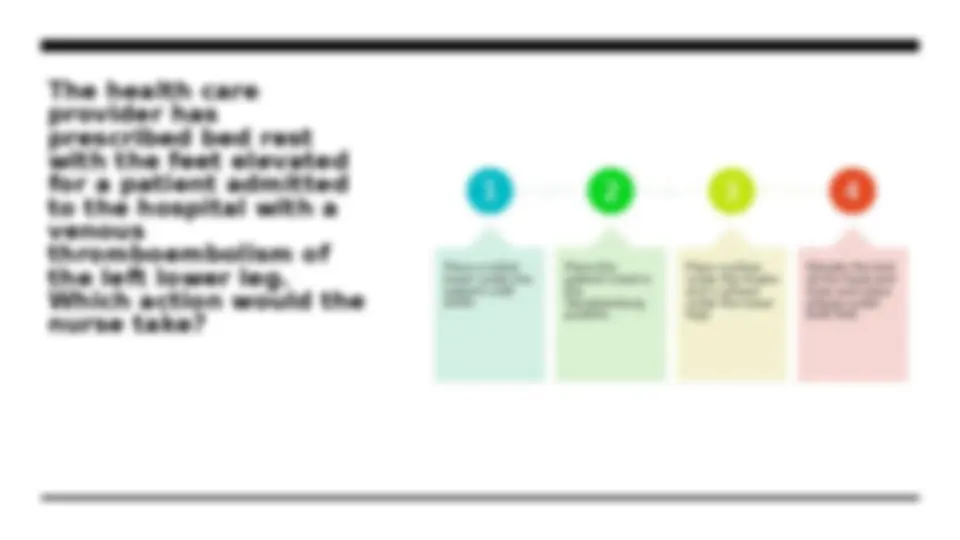
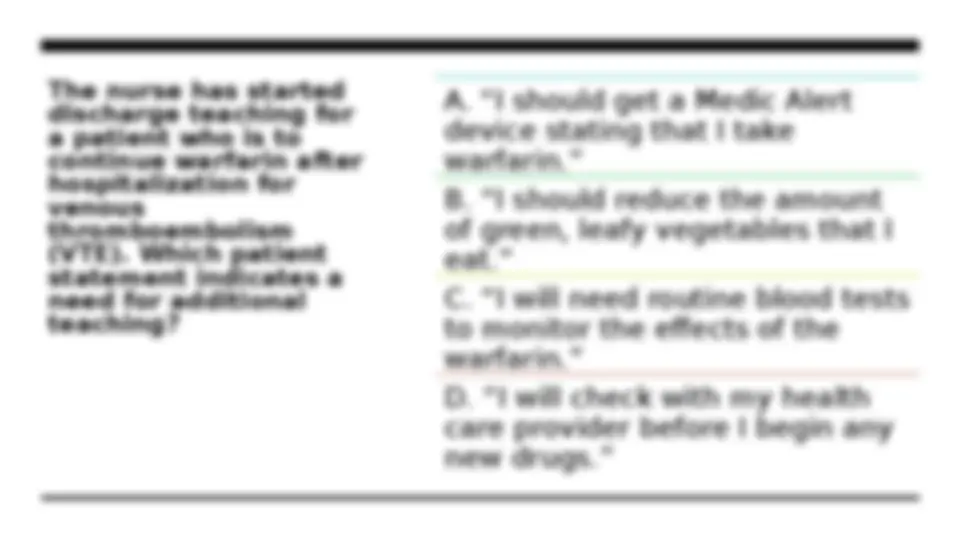
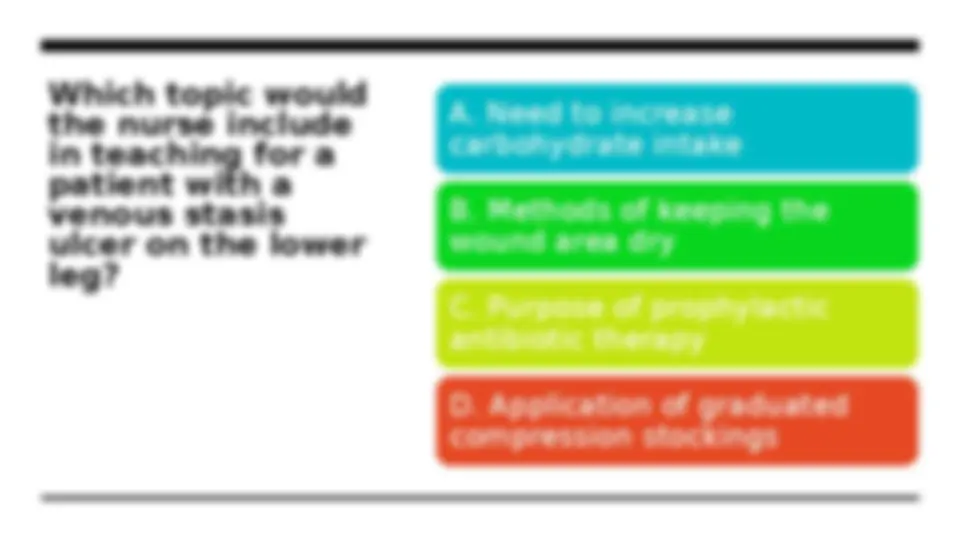
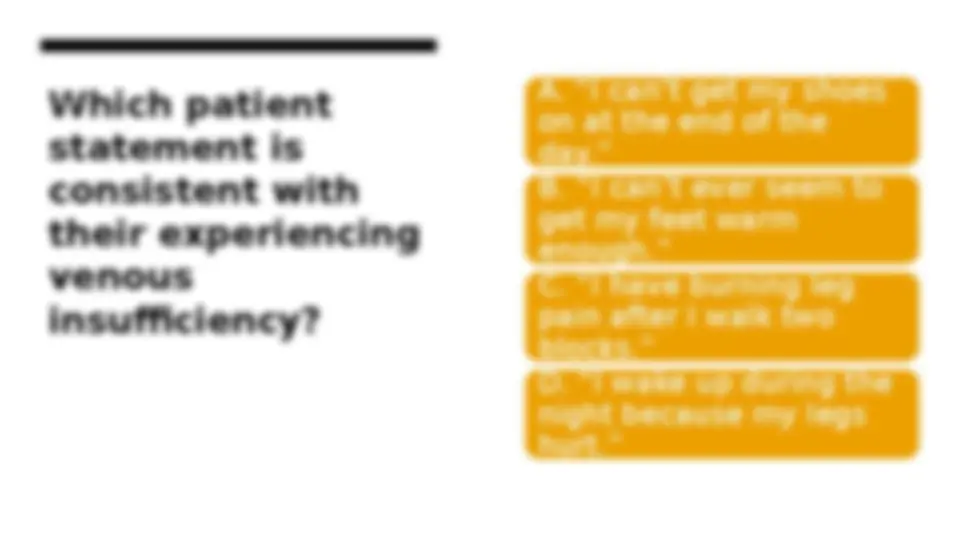
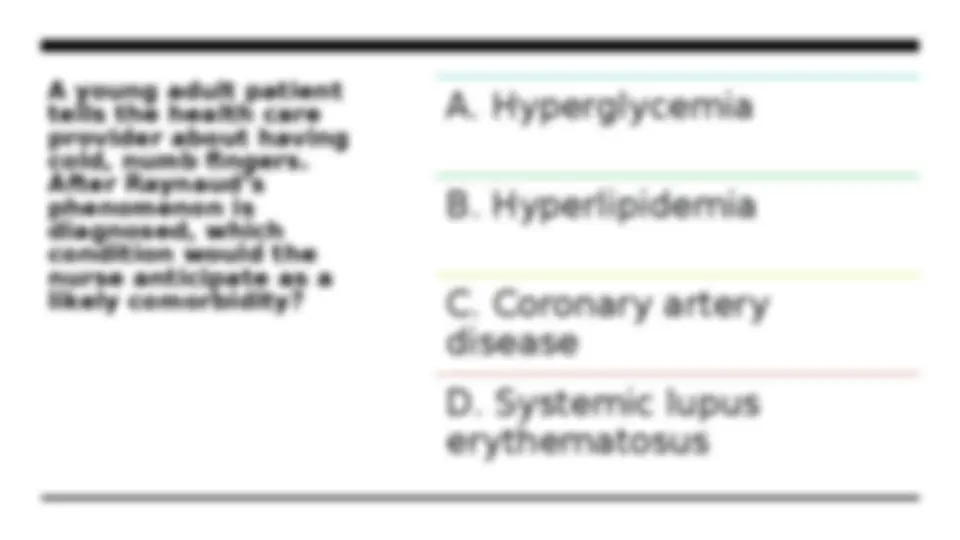
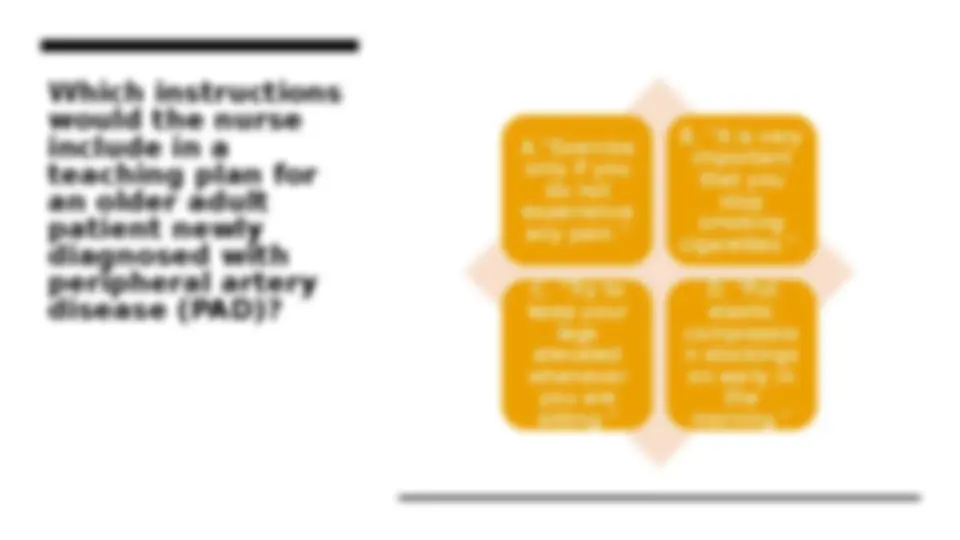
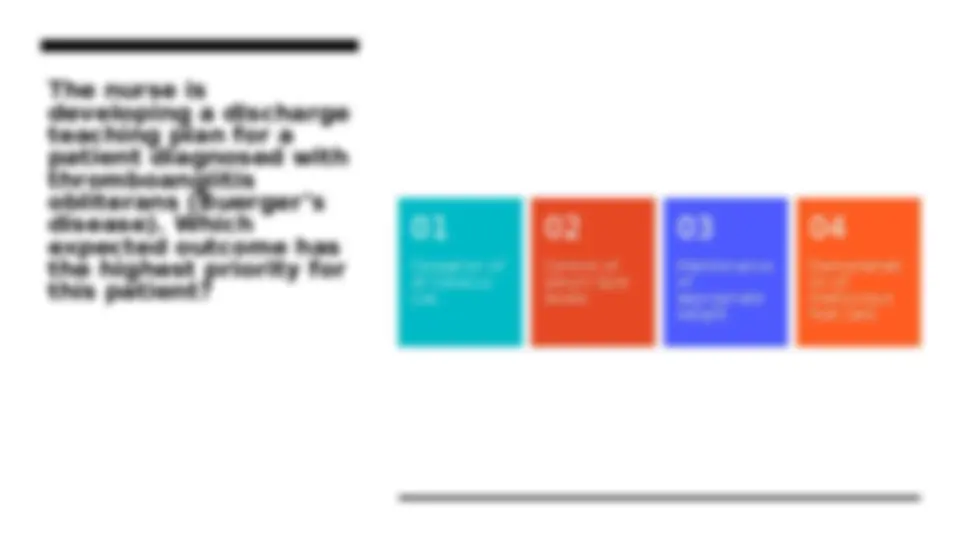

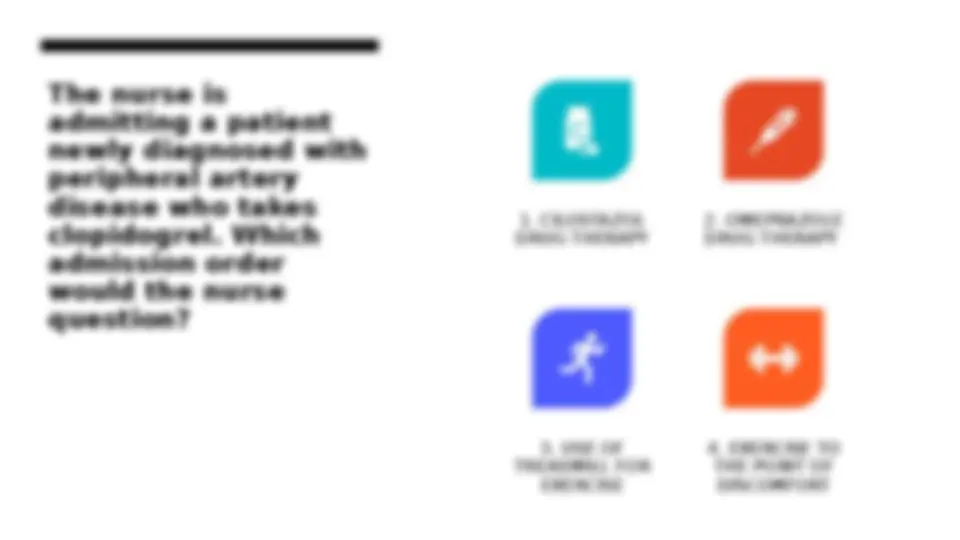


Study with the several resources on Docsity

Earn points by helping other students or get them with a premium plan


Prepare for your exams
Study with the several resources on Docsity

Earn points to download
Earn points by helping other students or get them with a premium plan
Community
Ask the community for help and clear up your study doubts
Discover the best universities in your country according to Docsity users
Free resources
Download our free guides on studying techniques, anxiety management strategies, and thesis advice from Docsity tutors
A patient with sleep apnea who uses a continuous positive airway pressure (CPAP) device is preparing to have inpatient surgery. Which instruction would the nurse provide to the patient? A. Schedule a preoperative sleep study. B. Take your home device to the hospital. C. Expect intubation with mechanical ventilation after surgery. D. Avoid requesting pain medication while you are hospitalized.
Typology: Quizzes
1 / 81

This page cannot be seen from the preview
Don't miss anything!










































































A patient with sleep apnea who uses a continuous positive airway pressure (CPAP) device is preparing to have inpatient surgery. Which instruction would the nurse provide to the patient? A. Schedule a preoperative sleep study. B. Take your home device to the hospital. C. Expect intubation with mechanical ventilation after surgery. D. Avoid requesting pain medication while you are hospitalized.
The nurse completes a shift assessment on a patient admitted in the early phase of heart failure. Which sounds would the nurse most likely hear on auscultation? A. Continuous rumbling, snoring, or rattling sounds mainly on expiration B. Continuous high-pitched musical sounds on inspiration and expiration C. Discontinuous high-pitched sounds of short duration during inspiration D. Discontinuous low-pitched sounds of long duration during inspiration
The nurse assesses a patient with chronic obstructive pulmonary disease (COPD) who has been admitted after increasing dyspnea over the past 3 days. Which finding is important for the nurse to report to the health care provider?
A patient with bacterial pneumonia has coarse crackles and thick sputum. Which action would the nurse plan to promote airway clearance? A. Restrict oral fluids during the day.
B. Encourage pursed-lip breathing technique.
C. Help the patient to splint the chest when coughing.
D. Encourage the patient to wear the nasal O cannula.
The nurse provides discharge instructions to a patient who was hospitalized for pneumonia. Which statement by the patient indicates a good understanding of the instructions? A. “I will call my health care provider if I still feel tired after a week.” B. “I will cancel my follow-up chest x-ray appointment if I feel better.” C. “I will continue to do deep breathing and coughing exercises at home.” D. “I will schedule two appointments for the pneumonia and influenza vaccines.”
A patient is hospitalized with active tuberculosis (TB). Which assessment finding indicates to the nurse that prescribed airborne precautions are likely to be discontinued? A. Chest x-ray shows no upper lobe infiltrates. B. TB medications have been taken for 6 months. C. Mantoux testing shows an induration of 10 mm. D. Sputum smears for acid-fast bacilli are negative.
After 2 months of prescribed treatment with isoniazid, rifampin, pyrazinamide, and ethambutol, a patient continues to have positive sputum smears for acid-fast bacilli (AFB). Which action would the nurse take next? A. Teach about drug-resistant TB. 1 B. Schedule directly observed therapy. 2 C. Discuss injectable antibiotics with the health care provider. 3 D. Ask the patient whether medications were taken as directed. 4
The nurse administers prescribed therapies for a patient with cor pulmonale and right- sided heart failure. Which assessment could be used to evaluate the effectiveness of the therapies? A. Observe for distended neck veins.
B. Auscultate for crackles in the lungs.
C. Palpate for heaves or thrills over the heart.
D. Monitor for elevated white blood cell count.
The nurse receives change- of-shift report on the following four patients. Which patient would the nurse assess first? A. A 77-yr-old patient with tuberculosis (TB) who has four medications due B. A 46-yr-old patient on bed rest who reports sudden onset of shortness of breath C. A 35-yr-old patient with pneumonia who has a temperature of 100.2°F (37.8°C) D. A 23-yr-old patient with cystic fibrosis who has pulmonary function testing scheduled
The nurse interviews a patient with a new diagnosis of chronic obstructive pulmonary disease (COPD). Which information is specific in confirming a diagnosis of chronic bronchitis? A. The patient relates a family history of bronchitis. B. The patient has a 30 pack-year cigarette smoking history. C. The patient reports a productive cough for 3 months of every winter. D. The patient has respiratory problems that began during the past 12 months.
The nurse receives a change-of-shift report on the following patients with chronic obstructive pulmonary disease (COPD). Which patient would the nurse assess first?
A. On the left side B. On the right side C. In the tripod position D. In the high-Fowler’s position
Which intervention will the nurse include in the plan of care for a patient with immune thrombocytopenic purpura? A. Assign the patient to a private room.
B. Avoid intramuscular (IM) injections.
C. Use rinses rather than a soft toothbrush for oral care.
D. Restrict activity to passive and active range of motion.